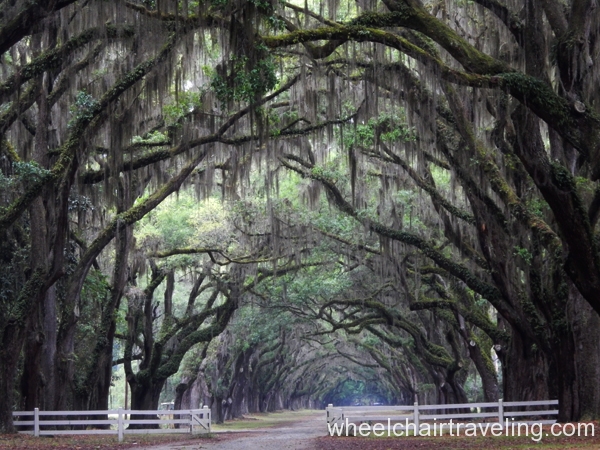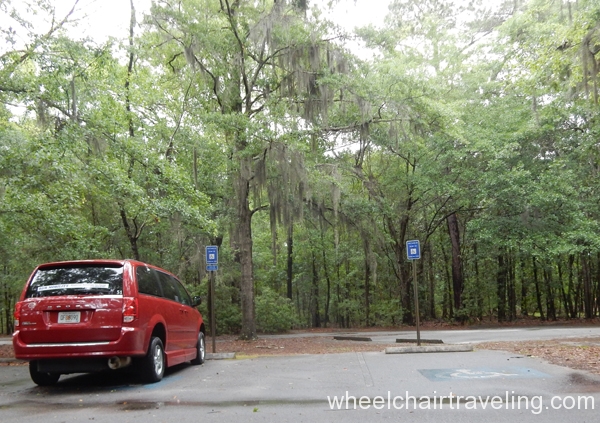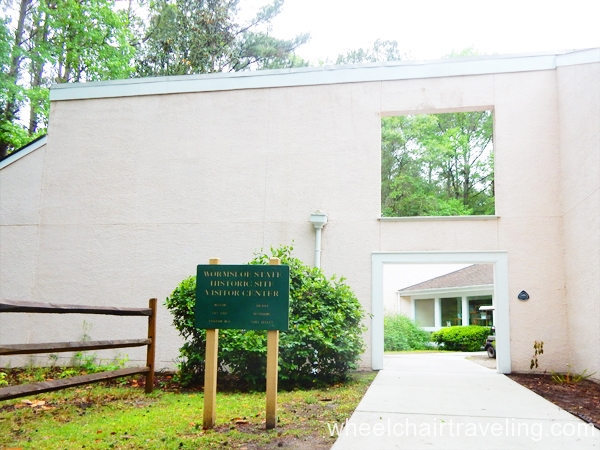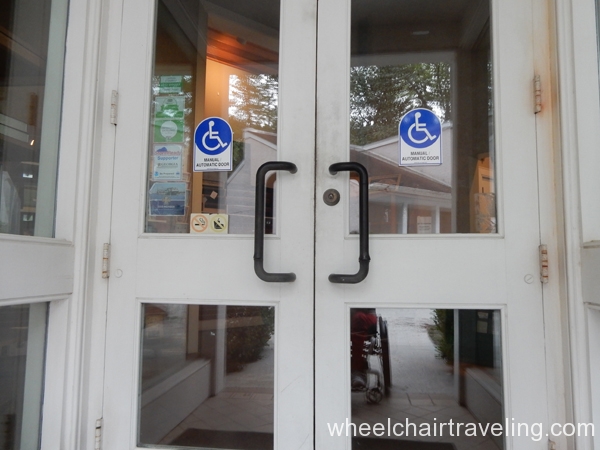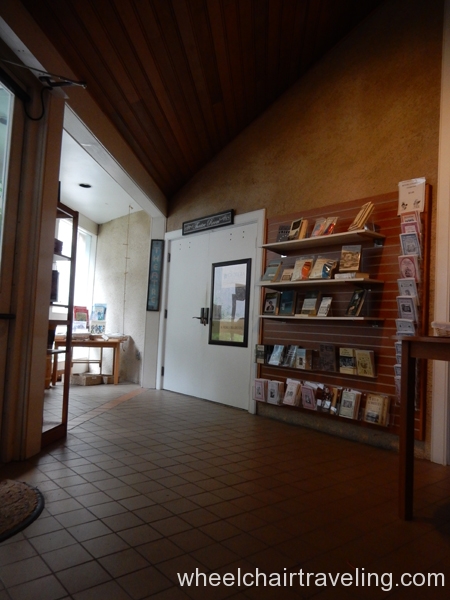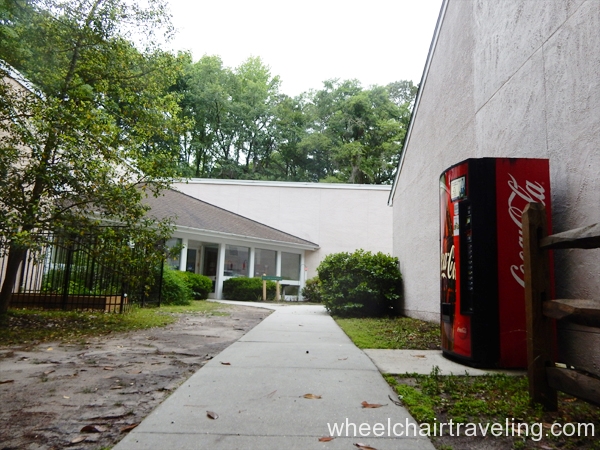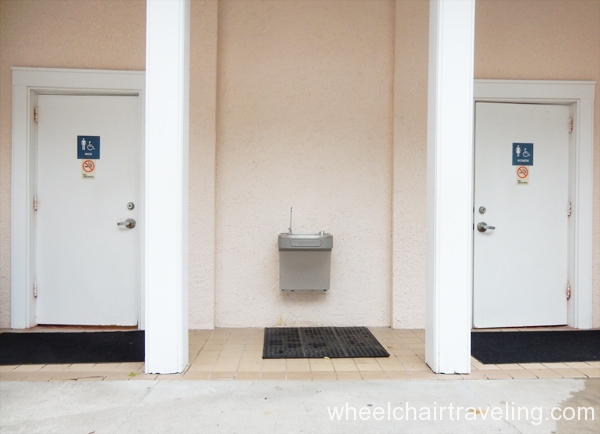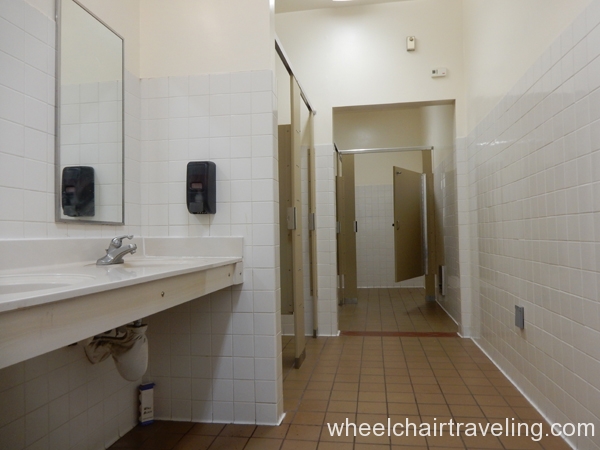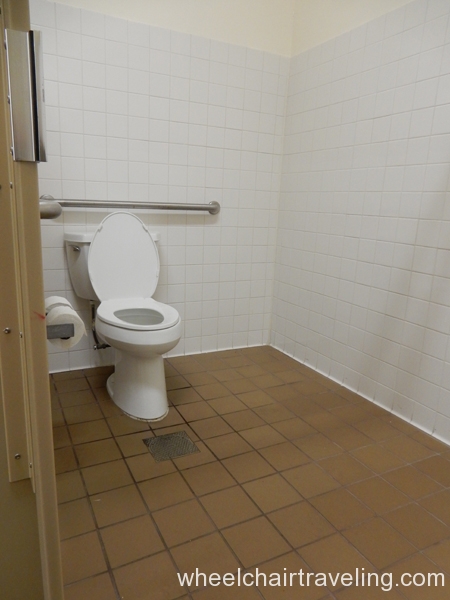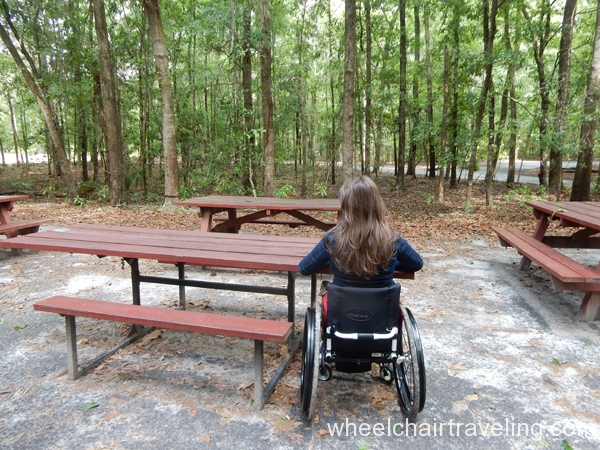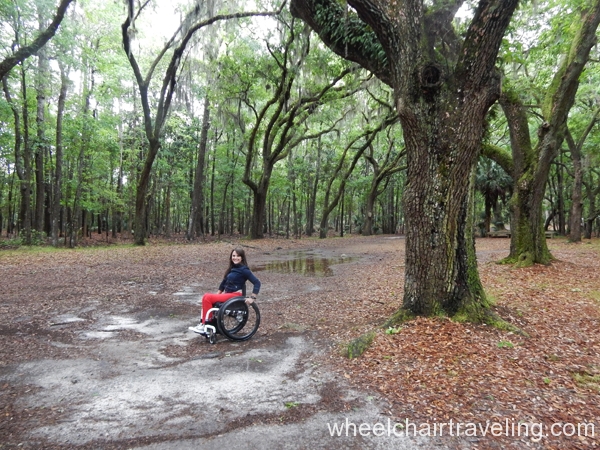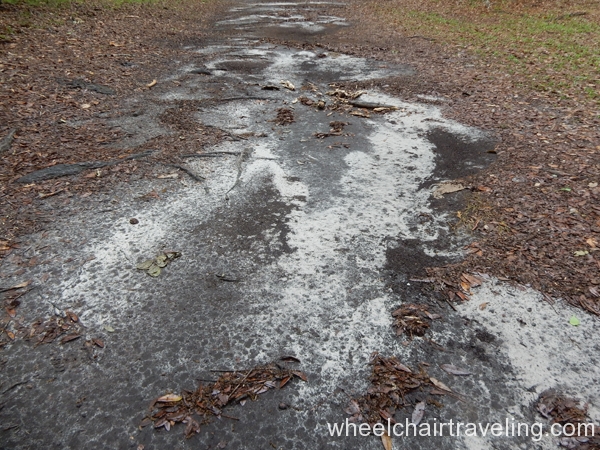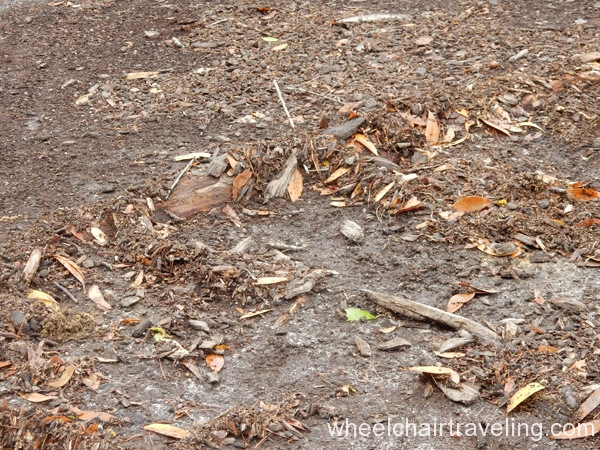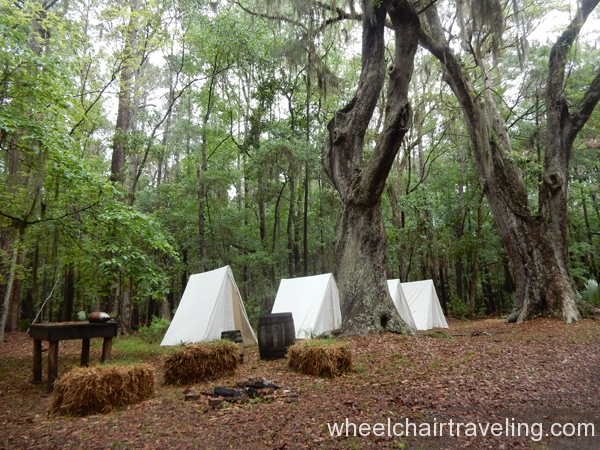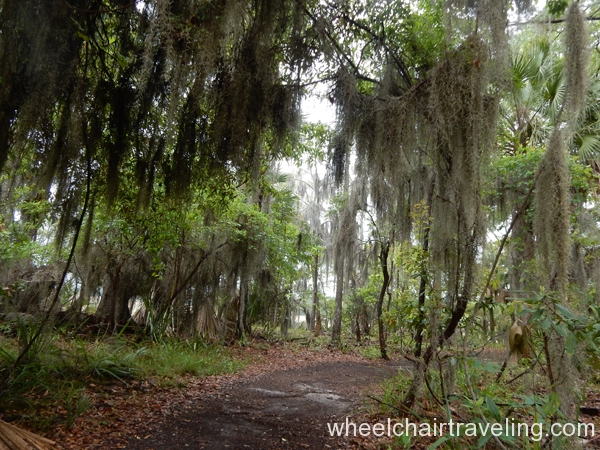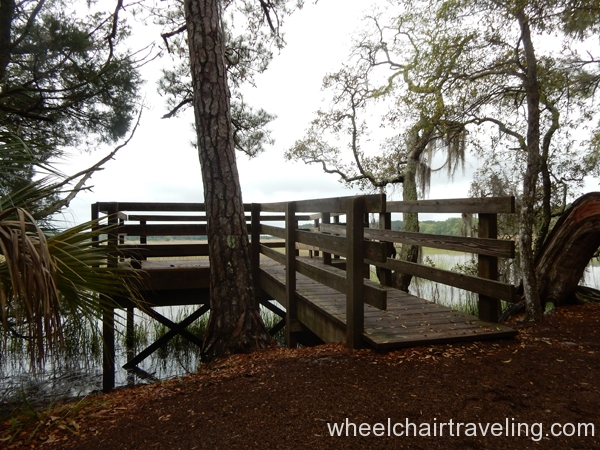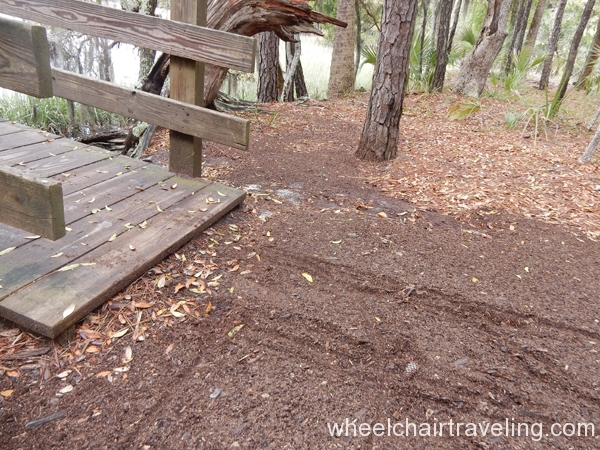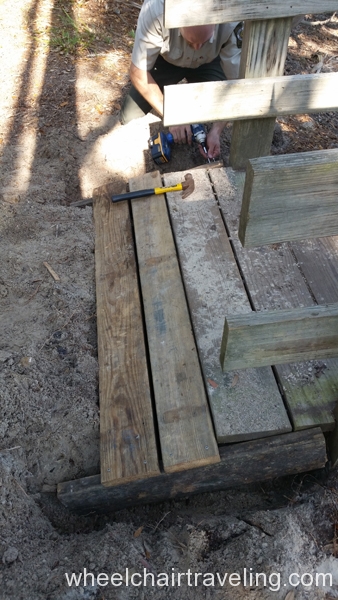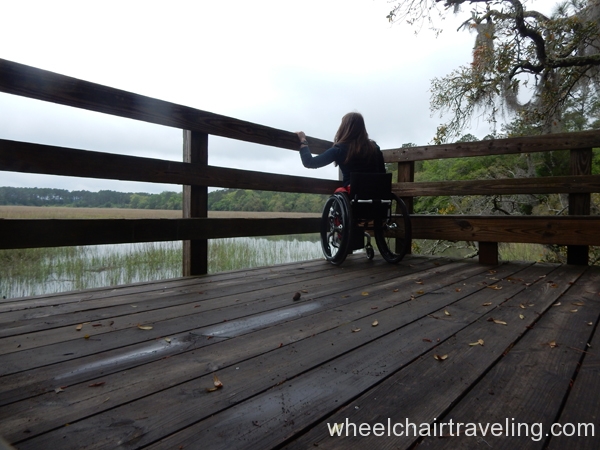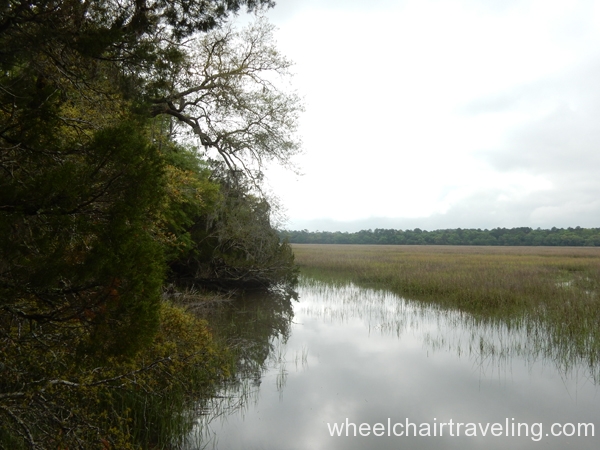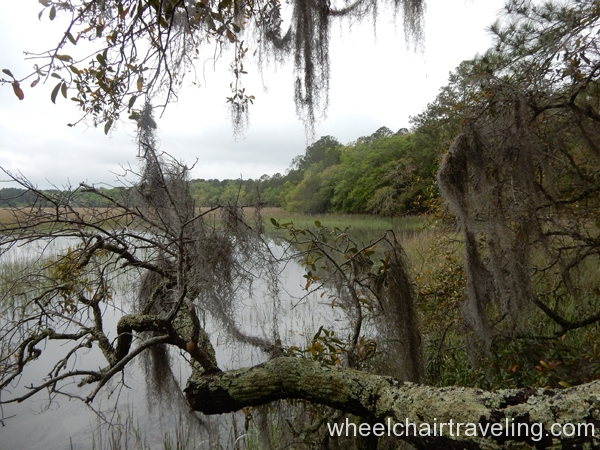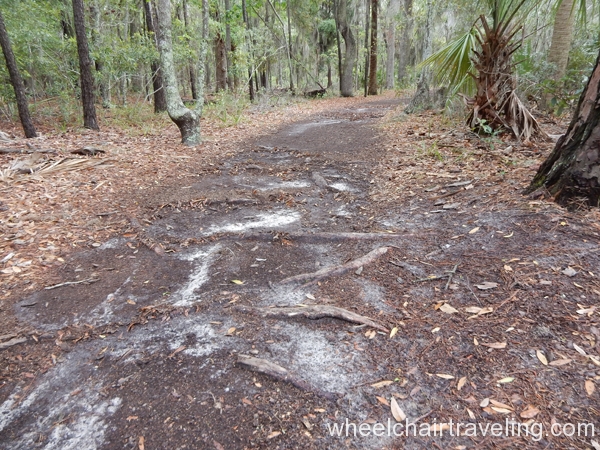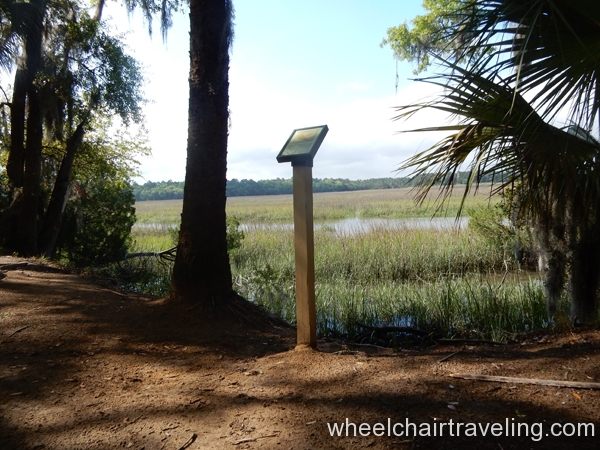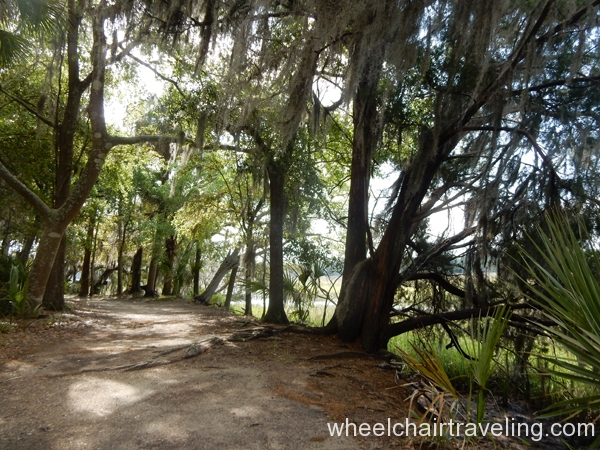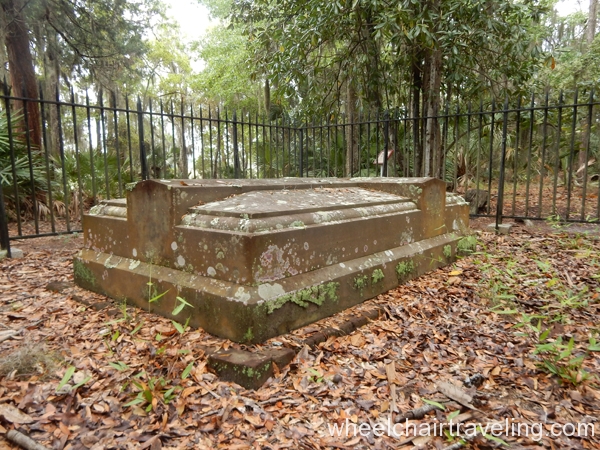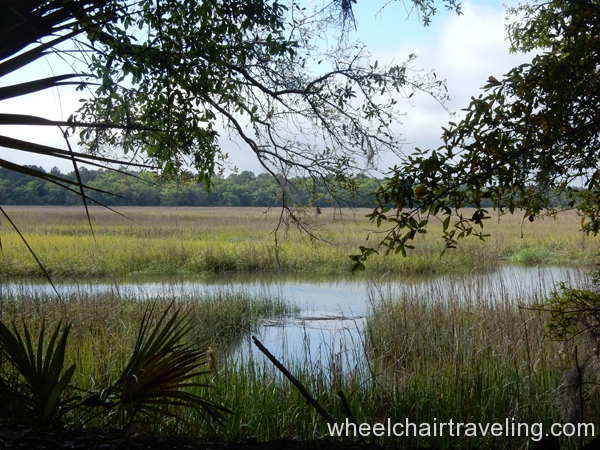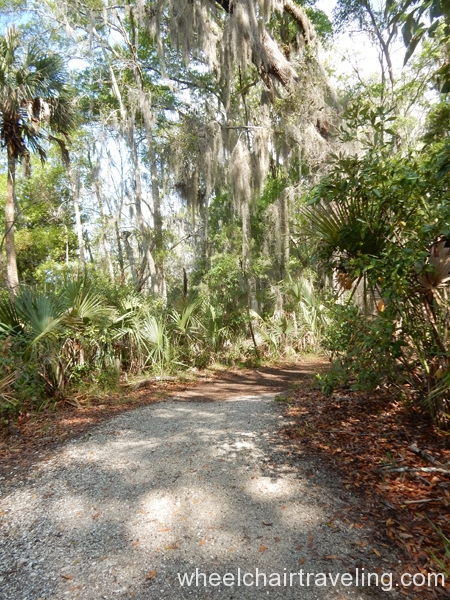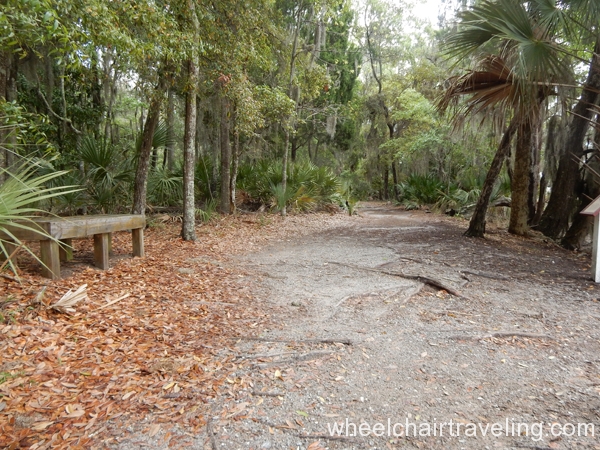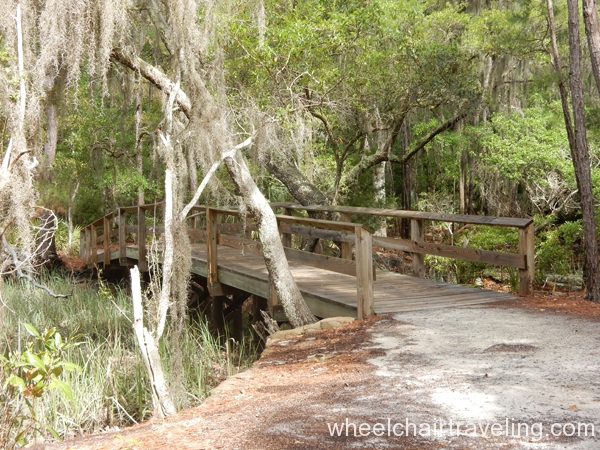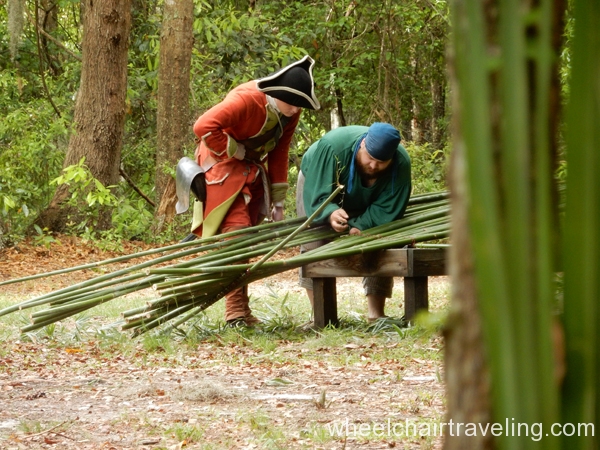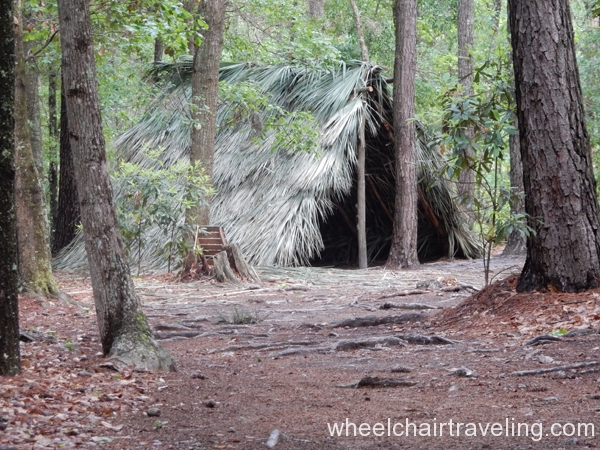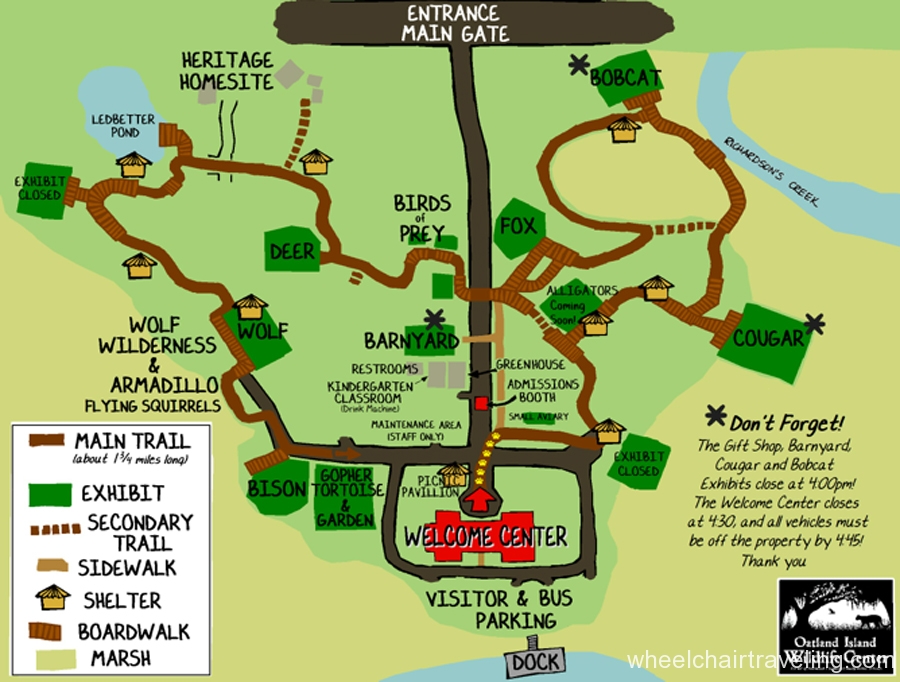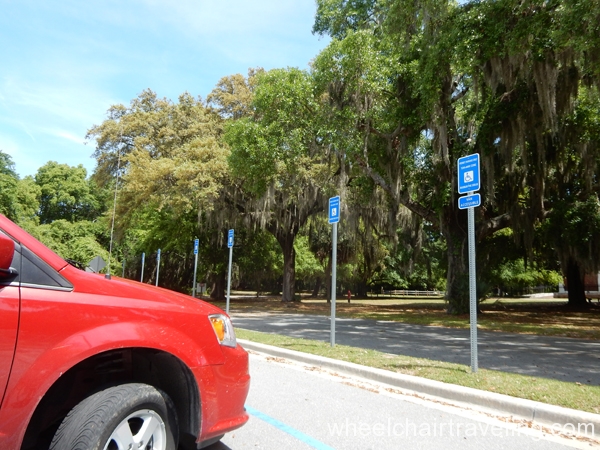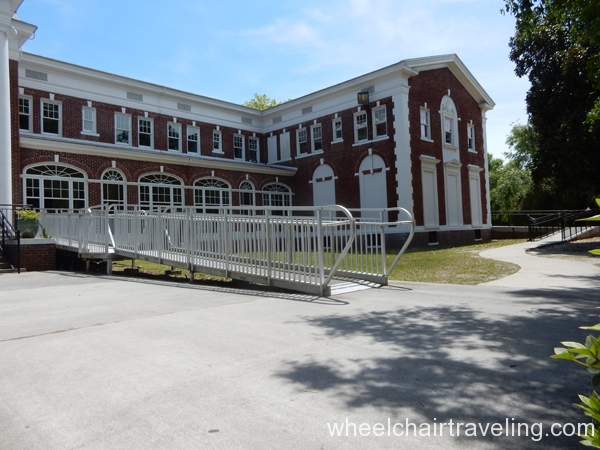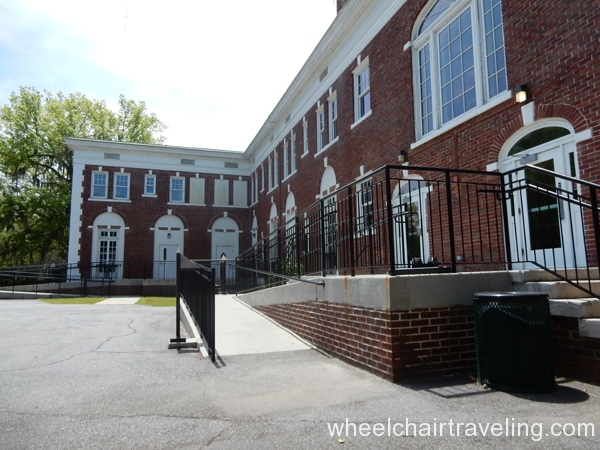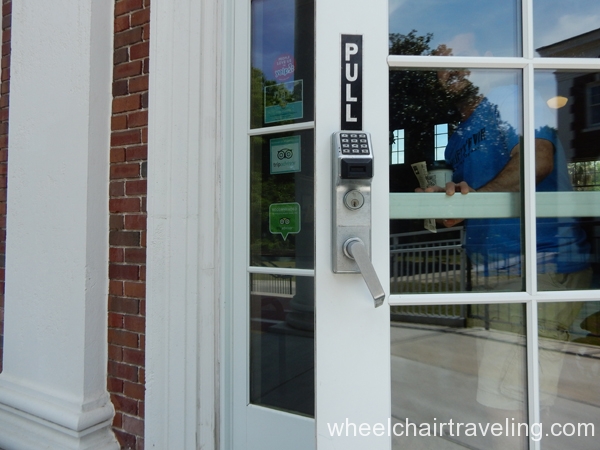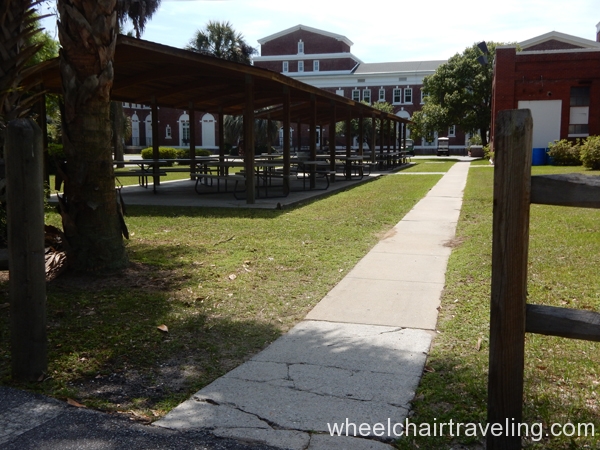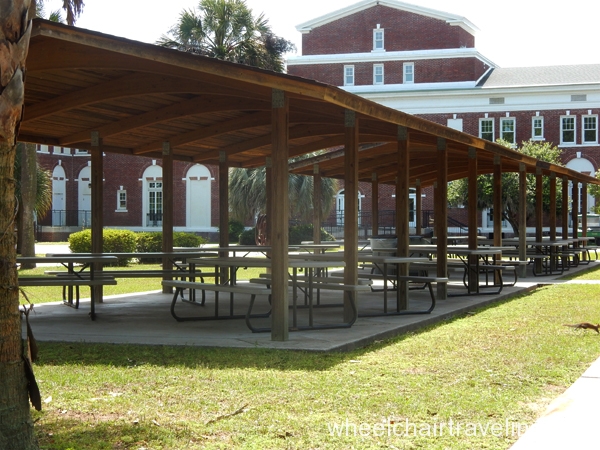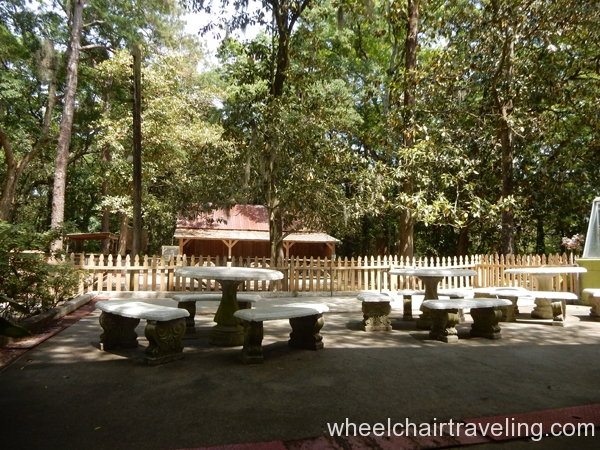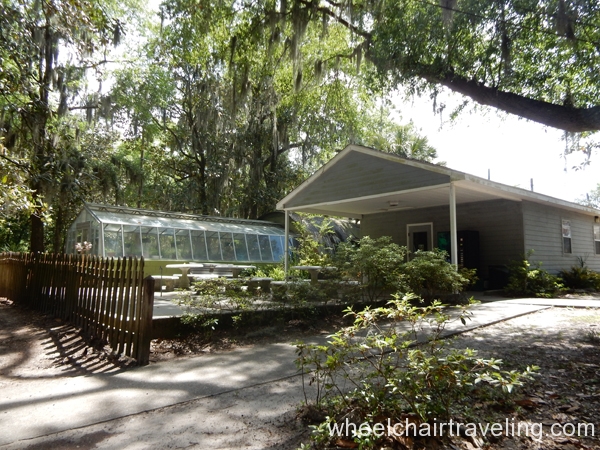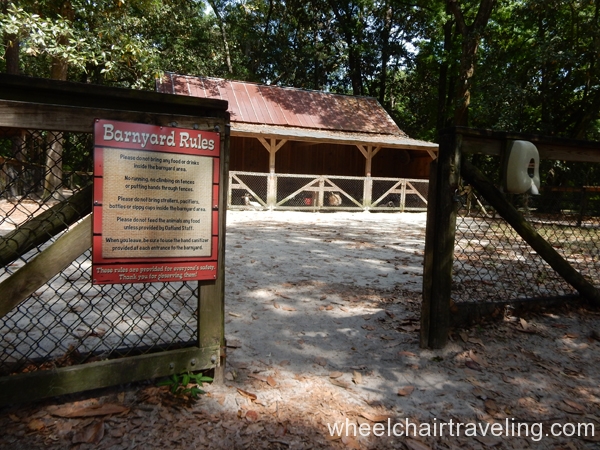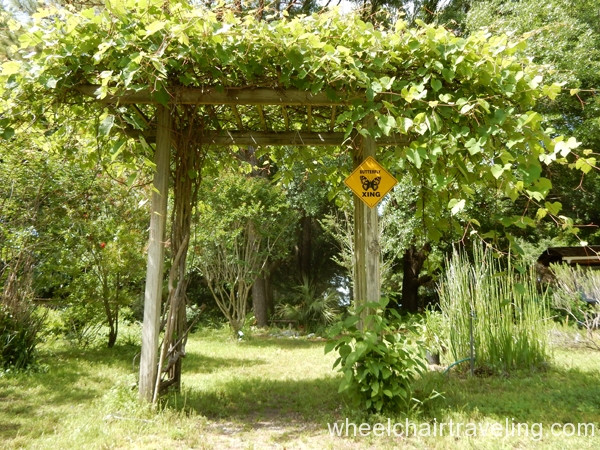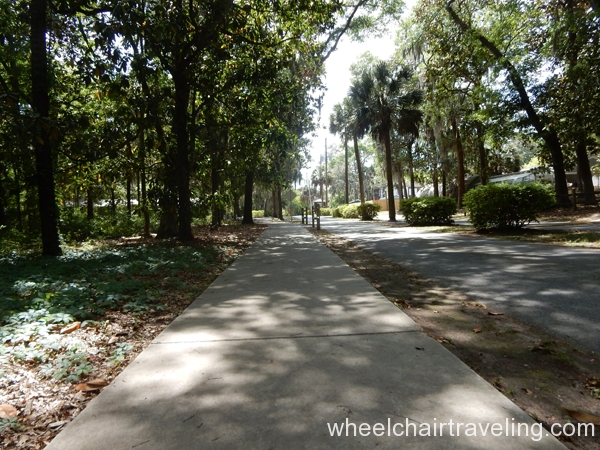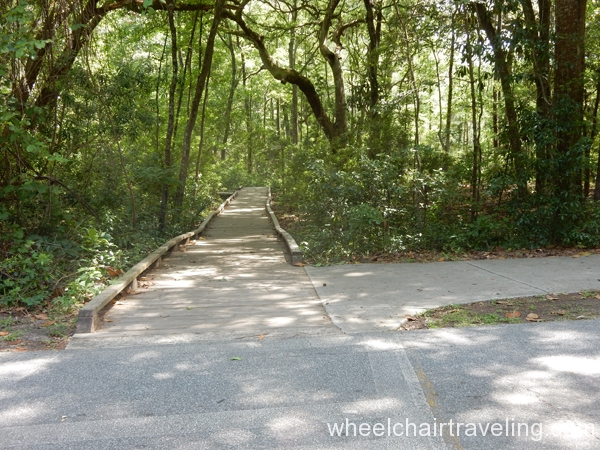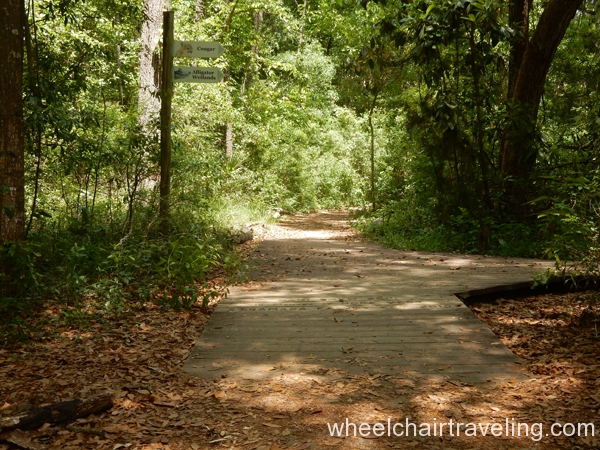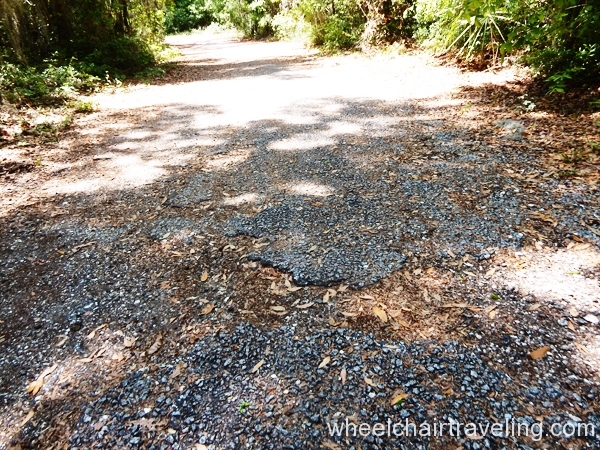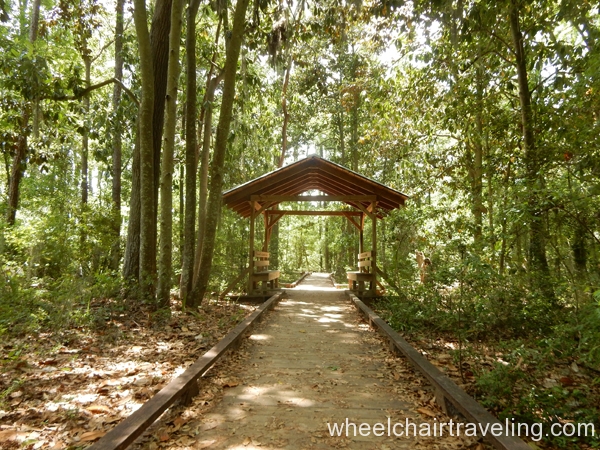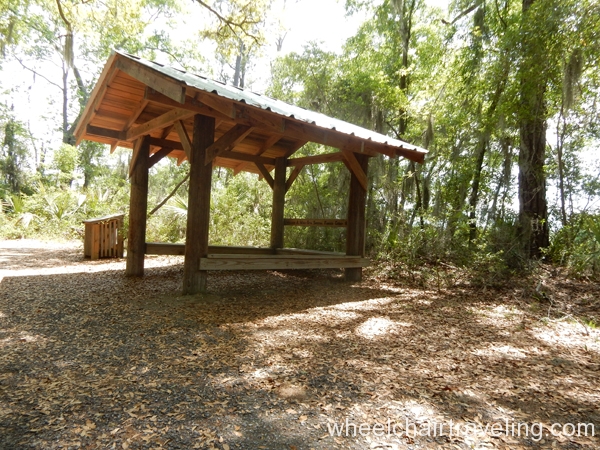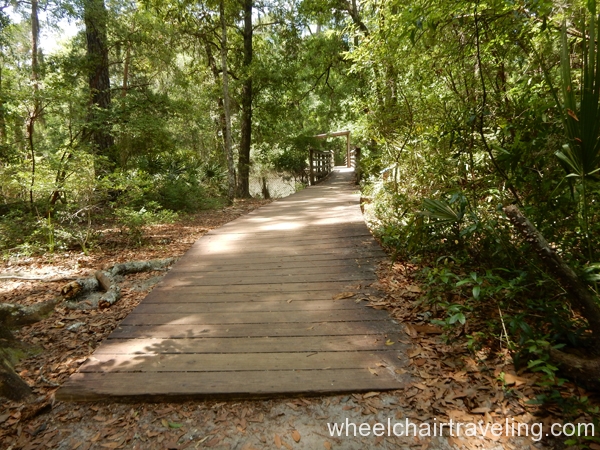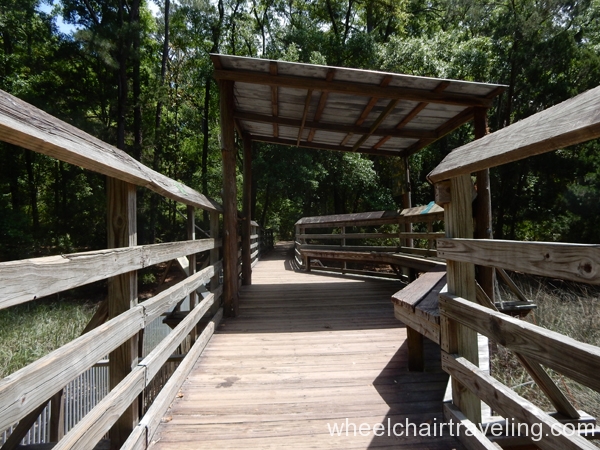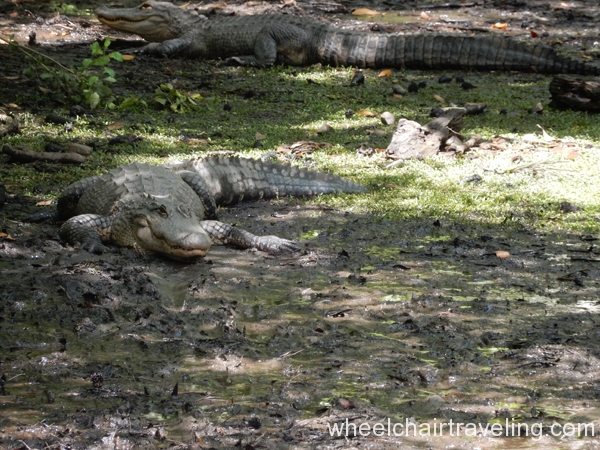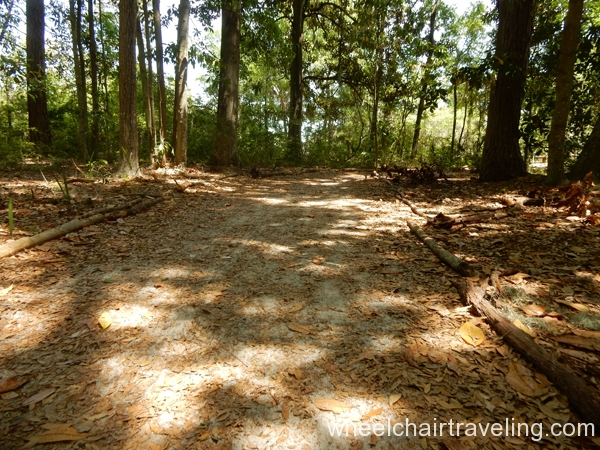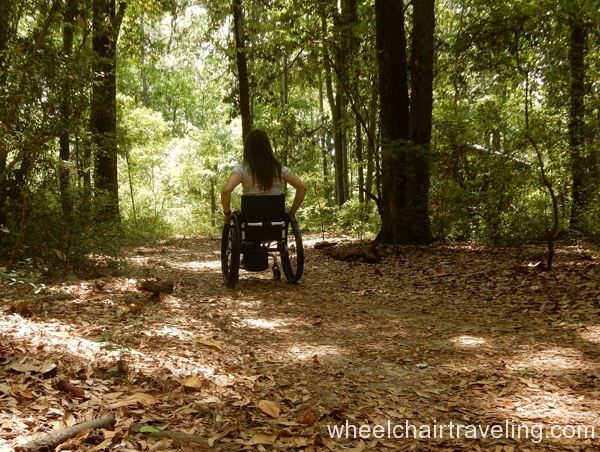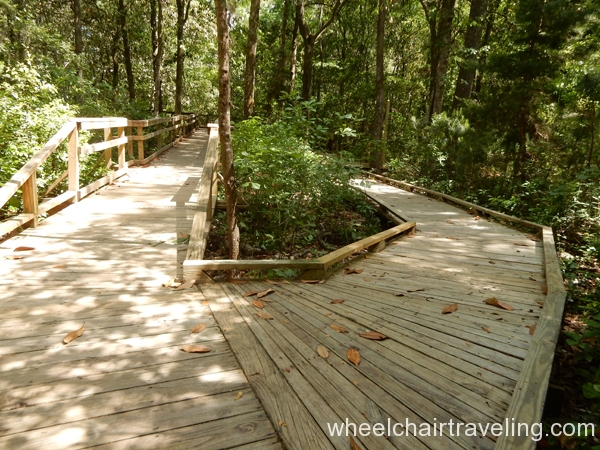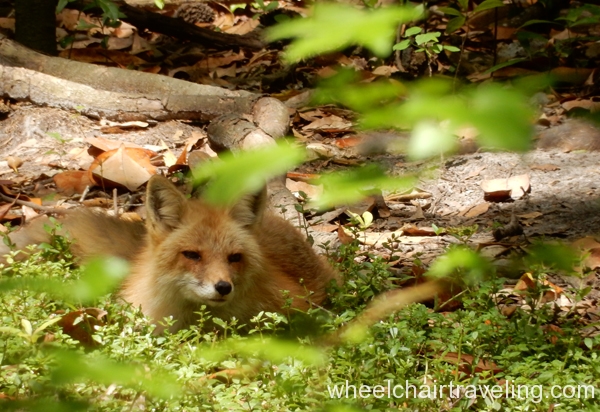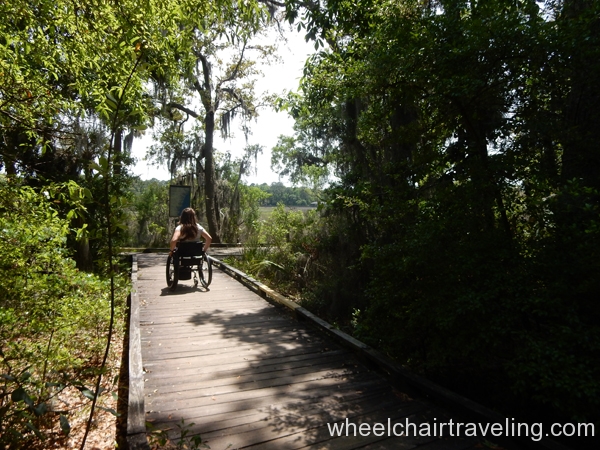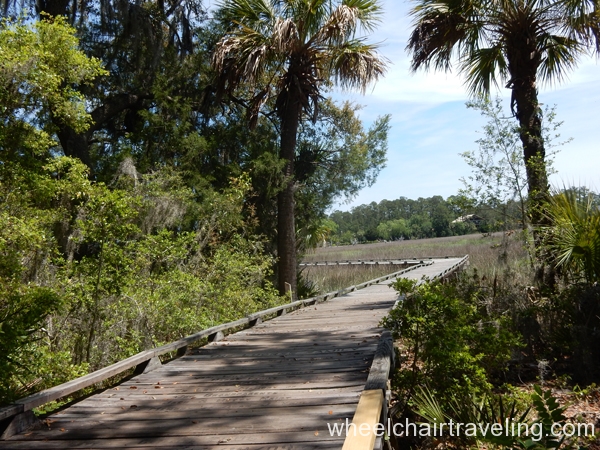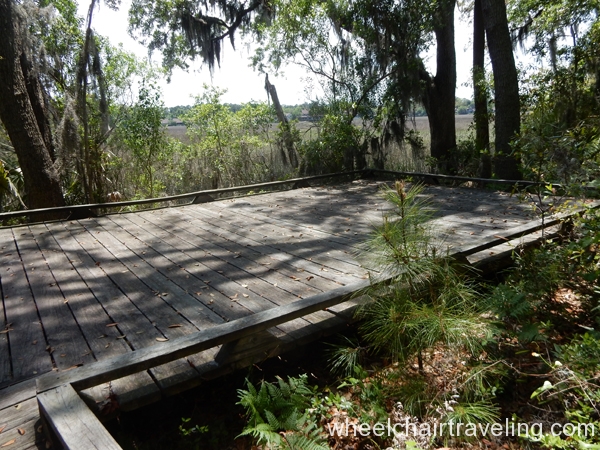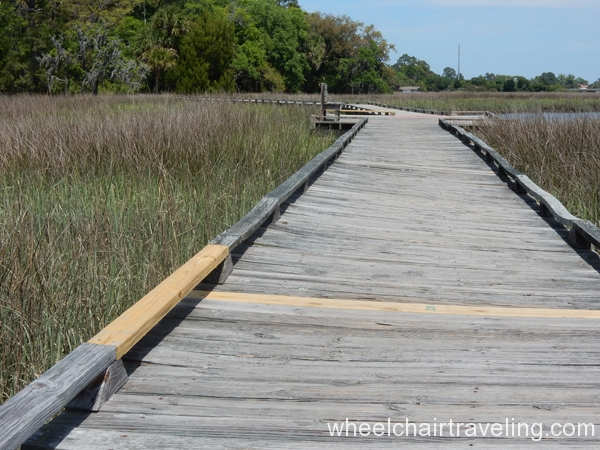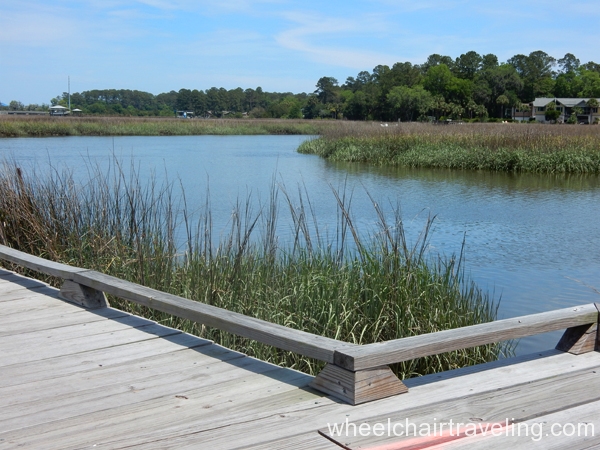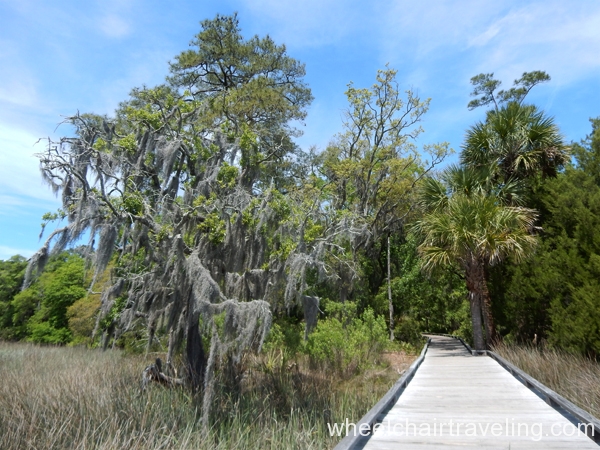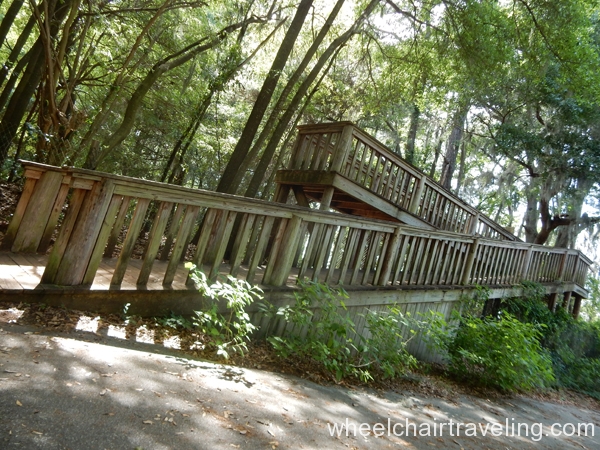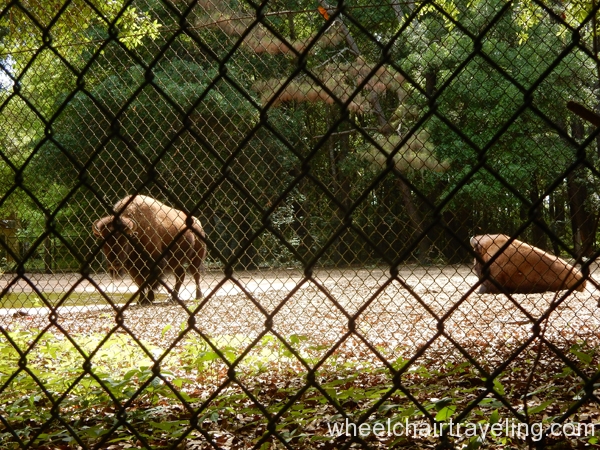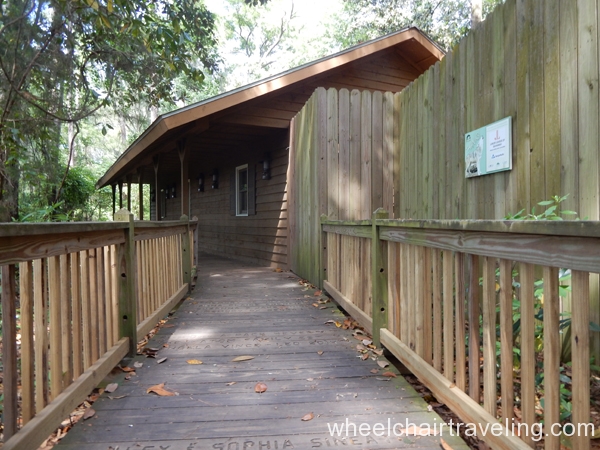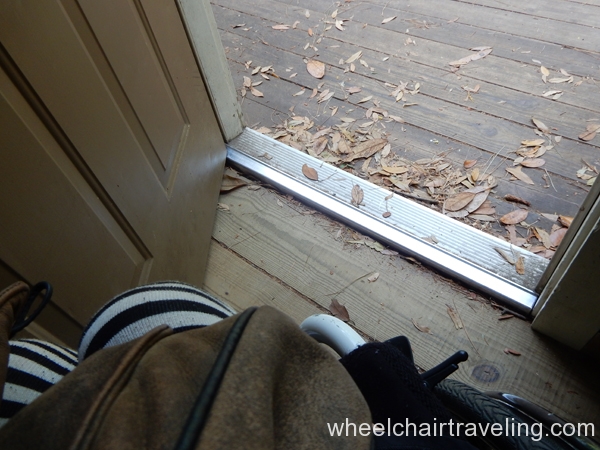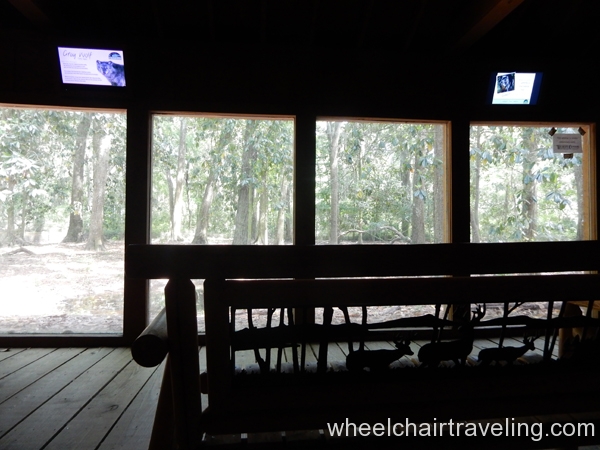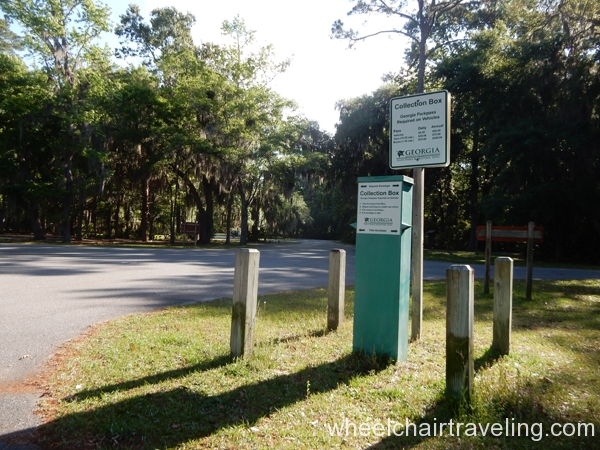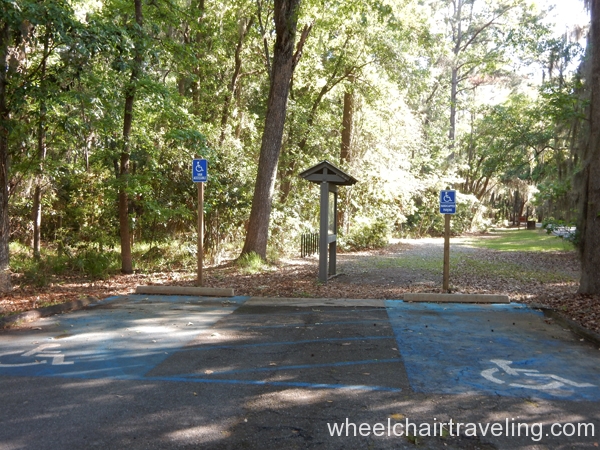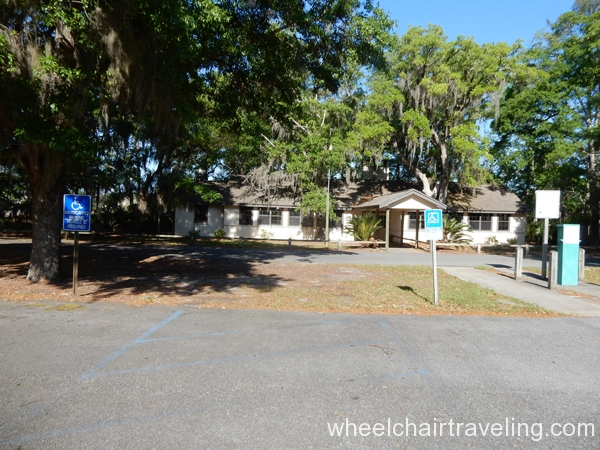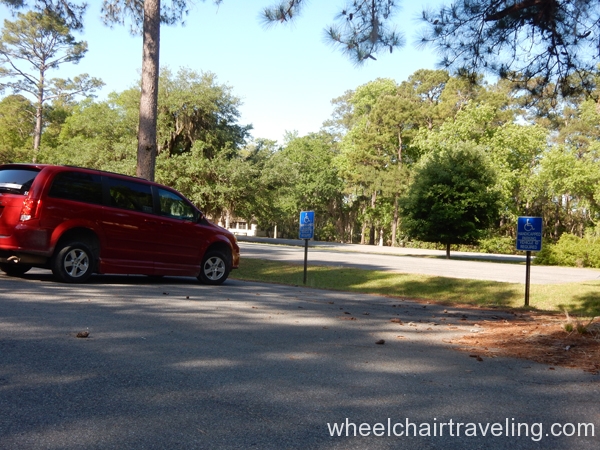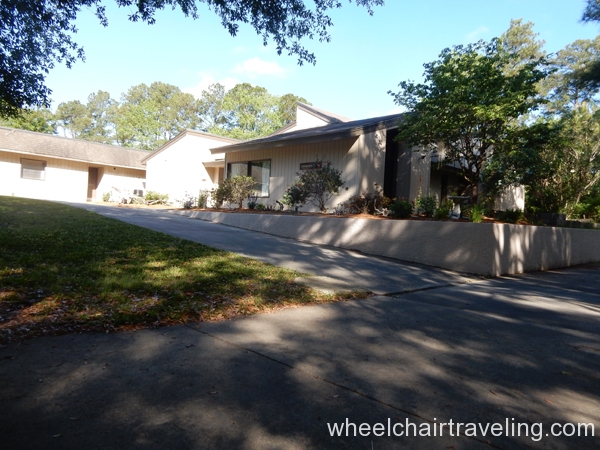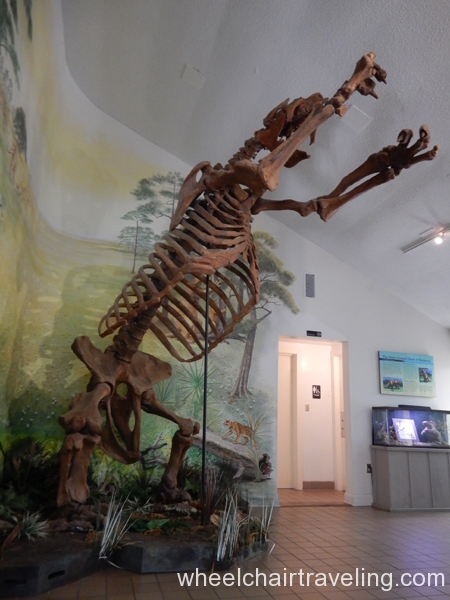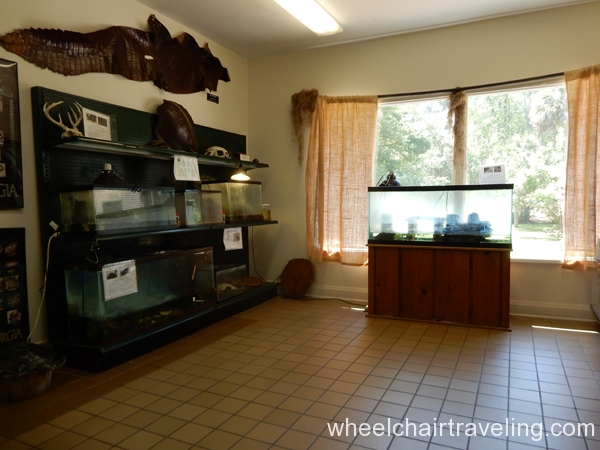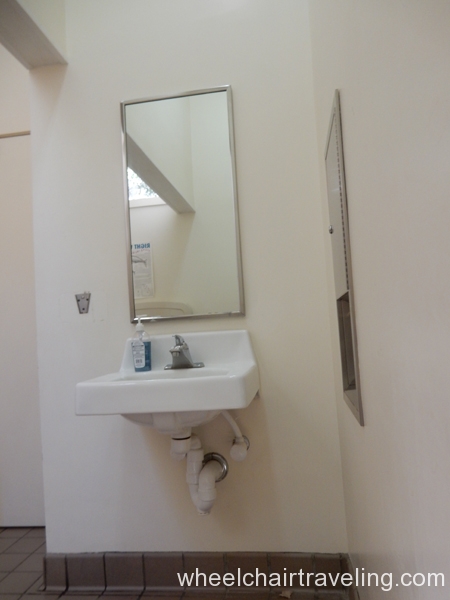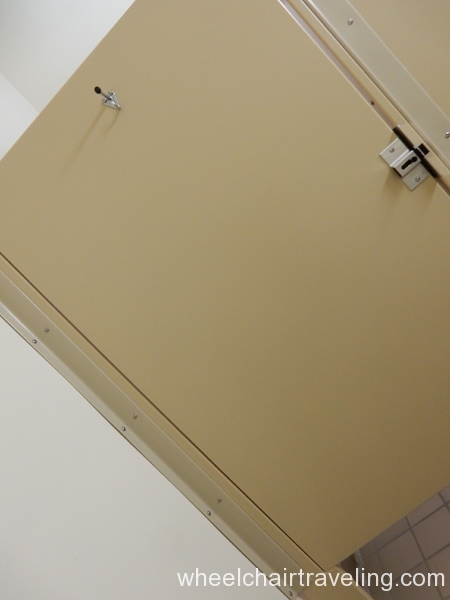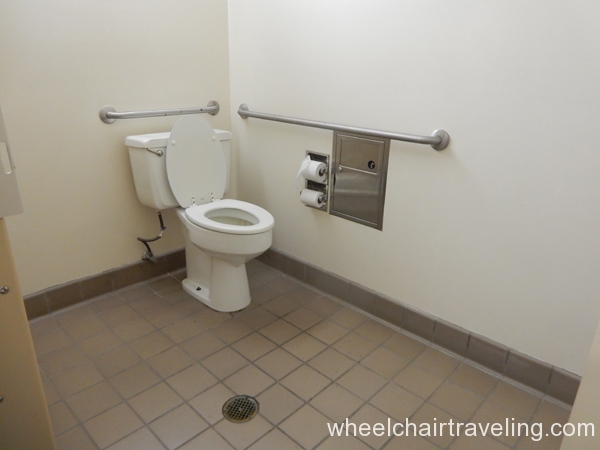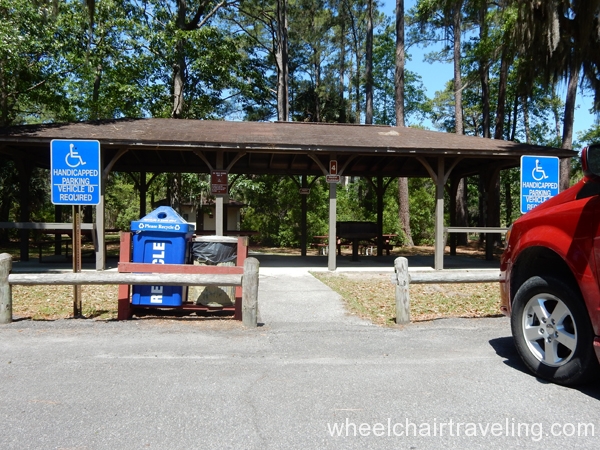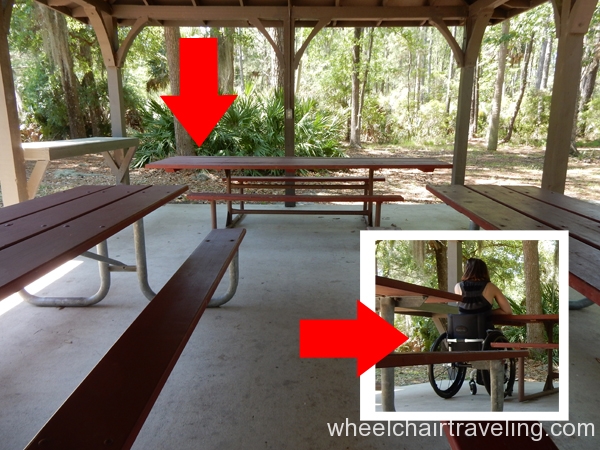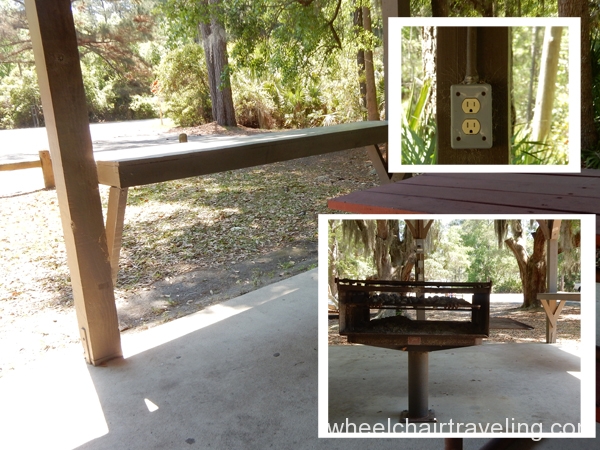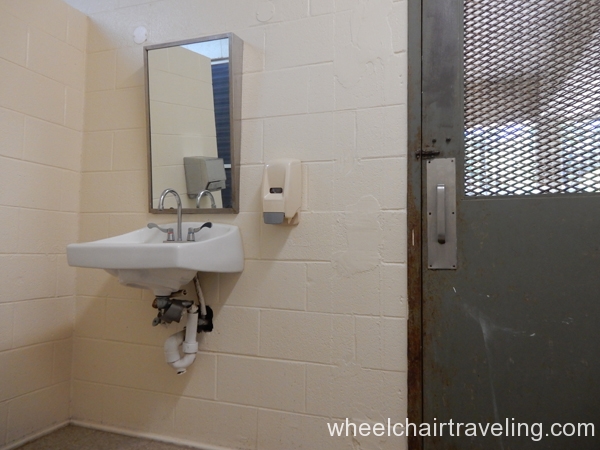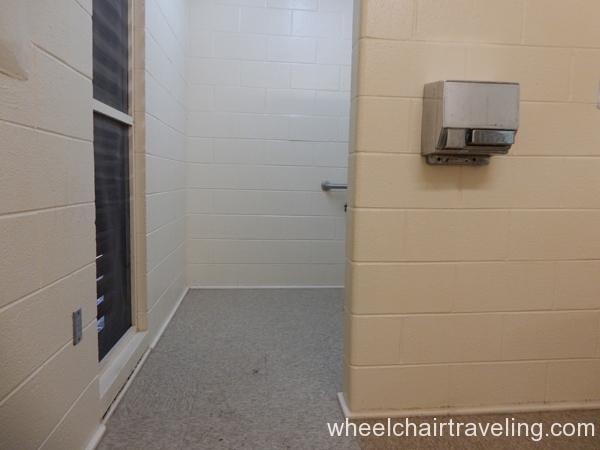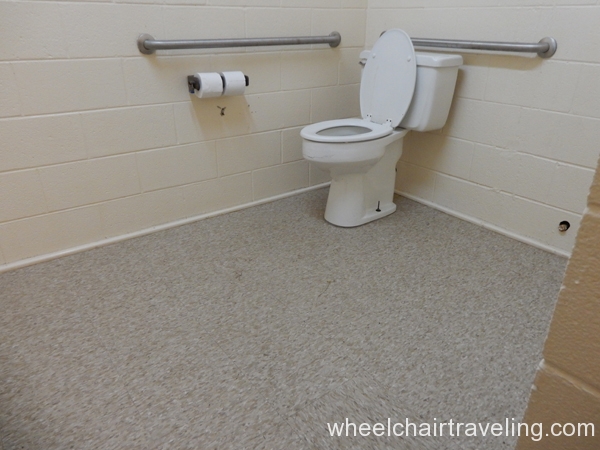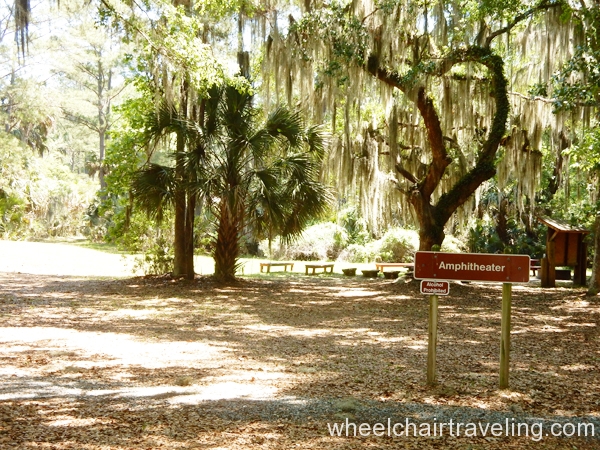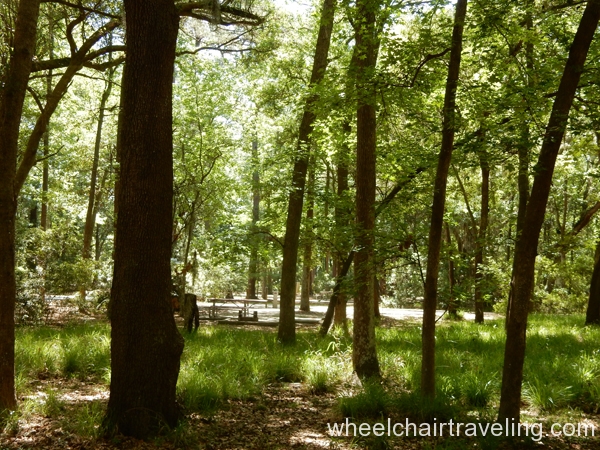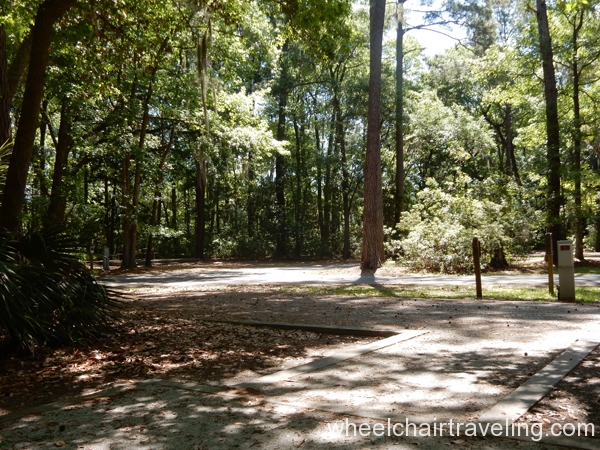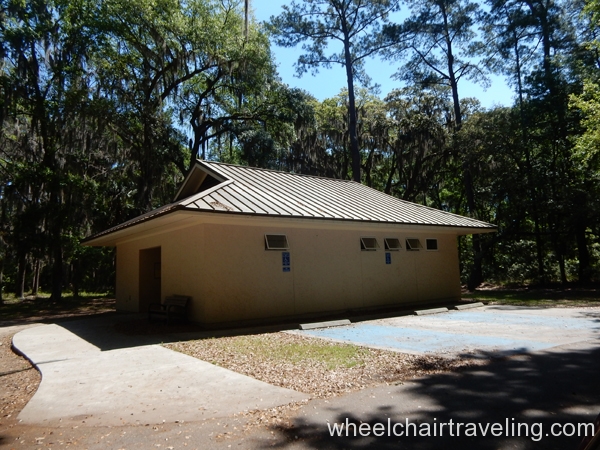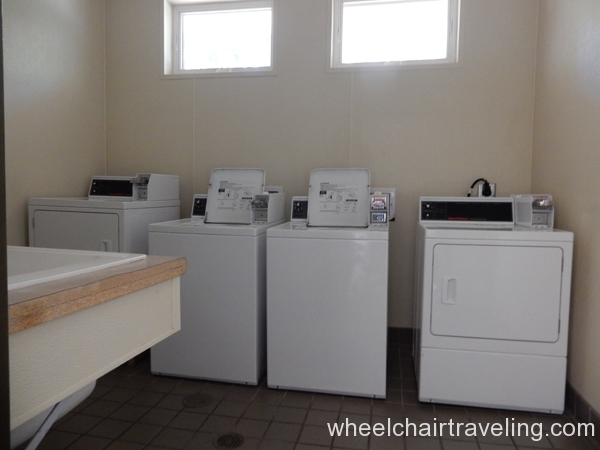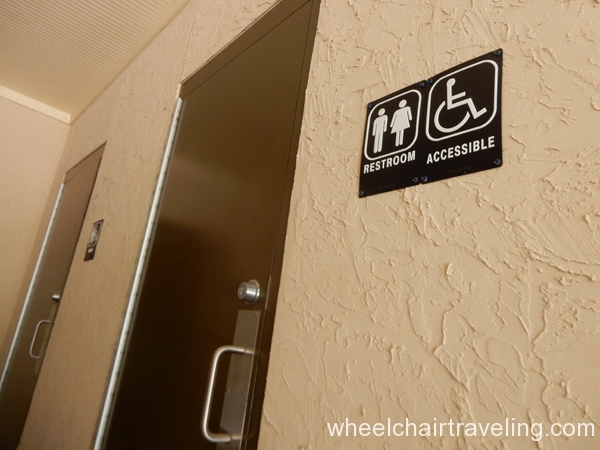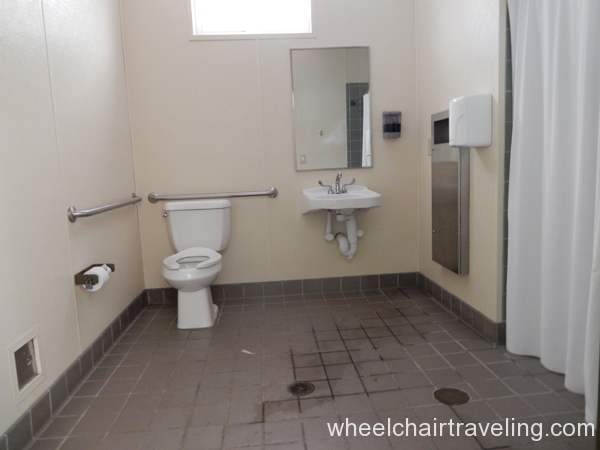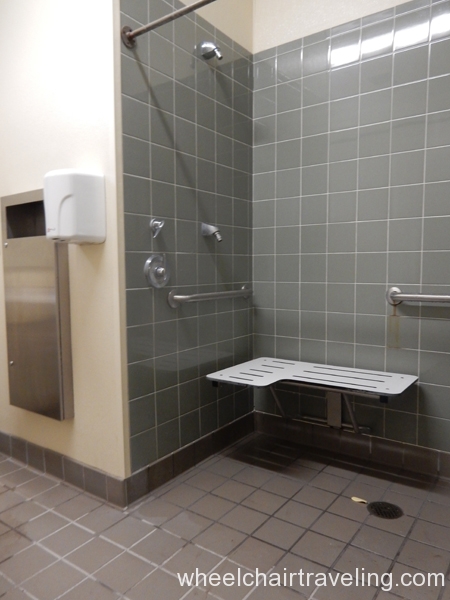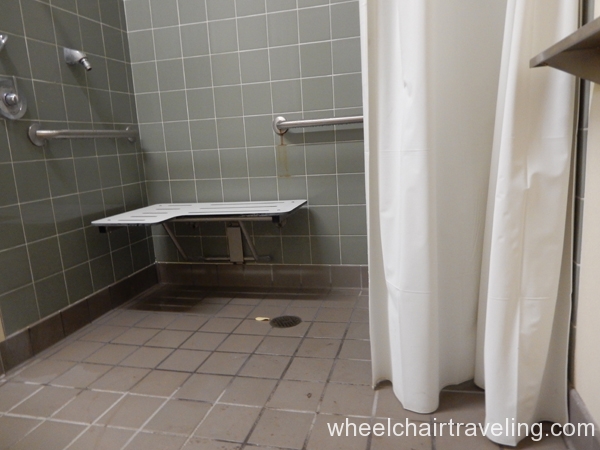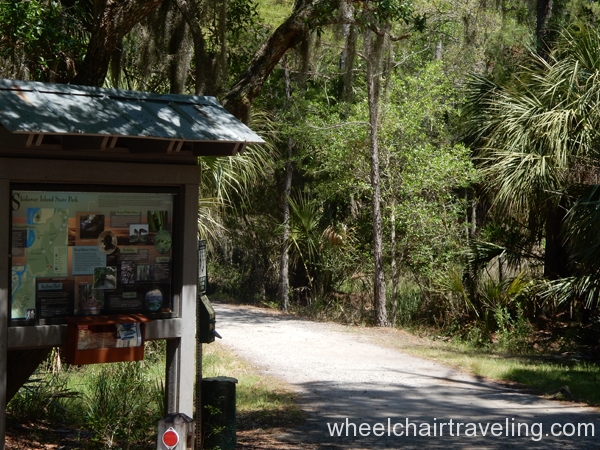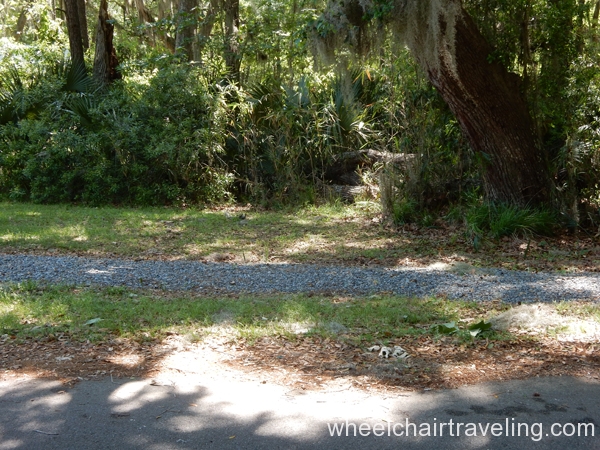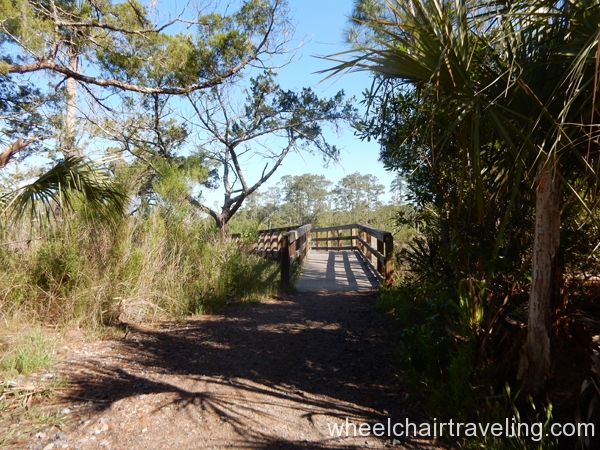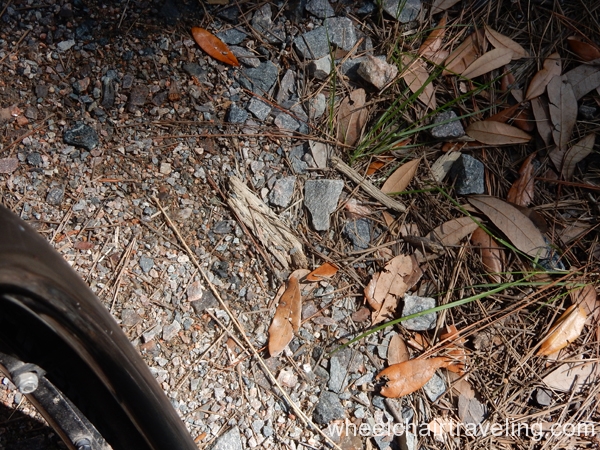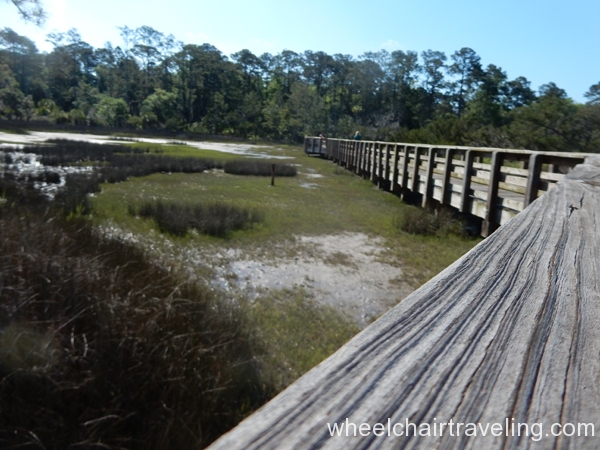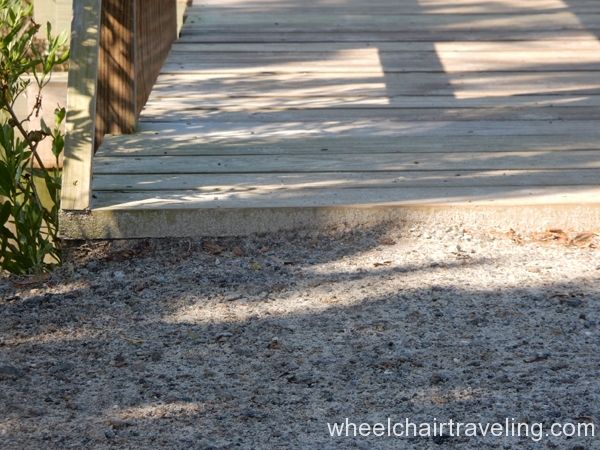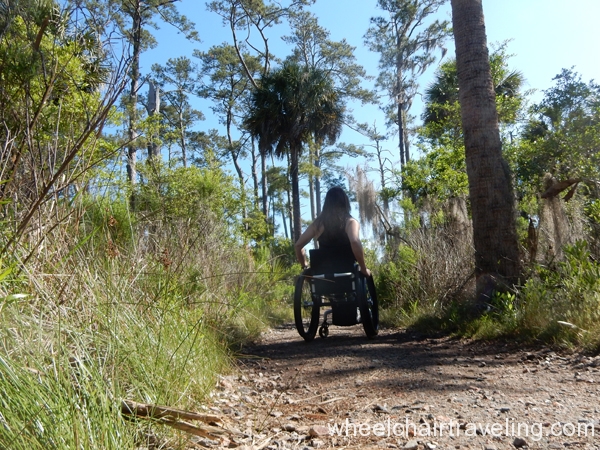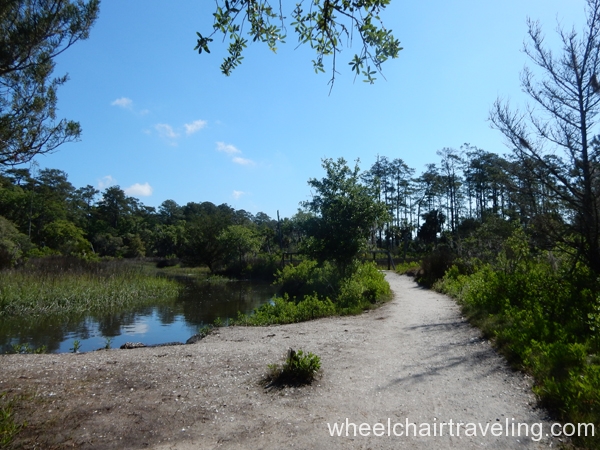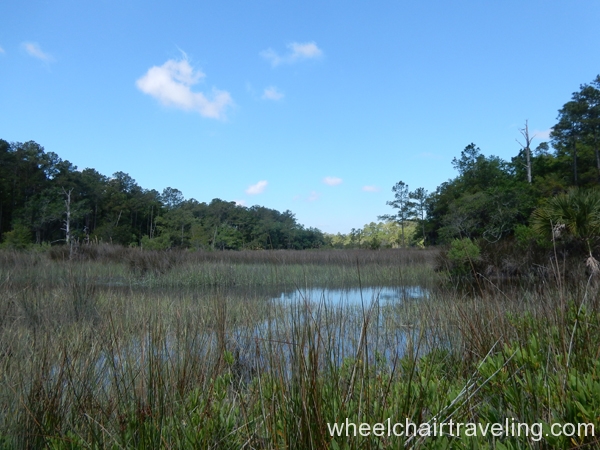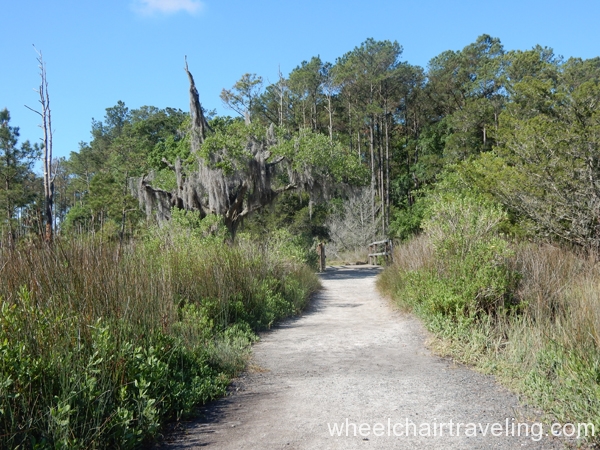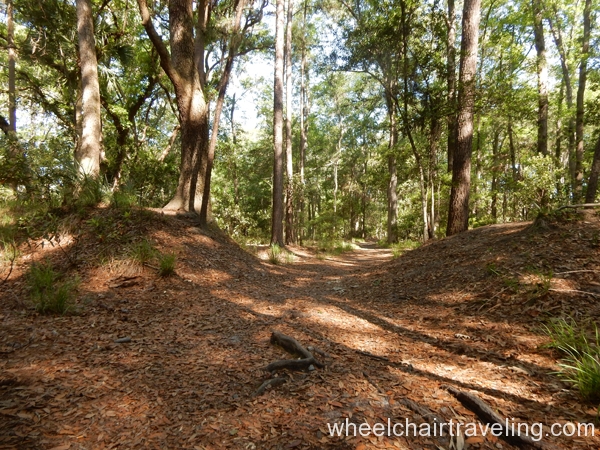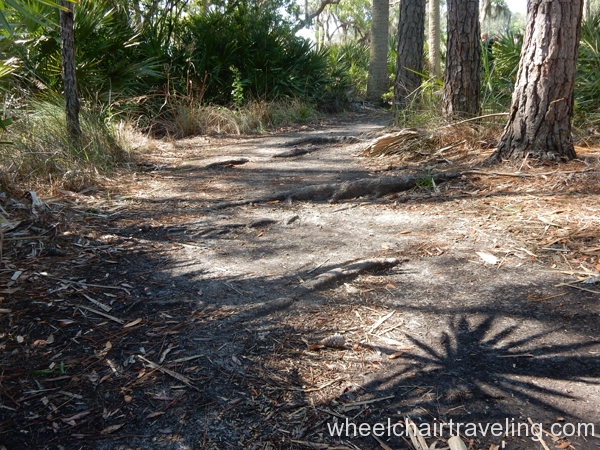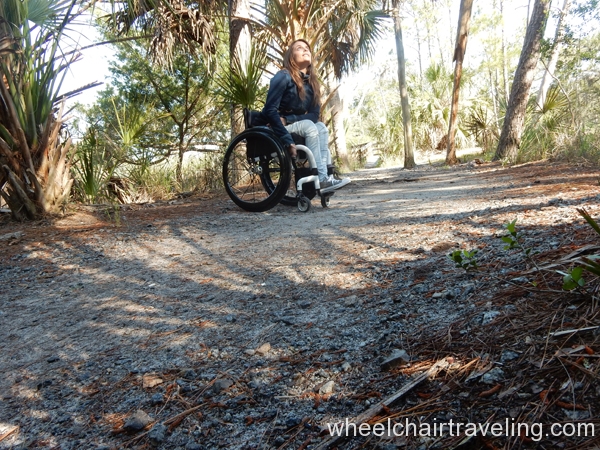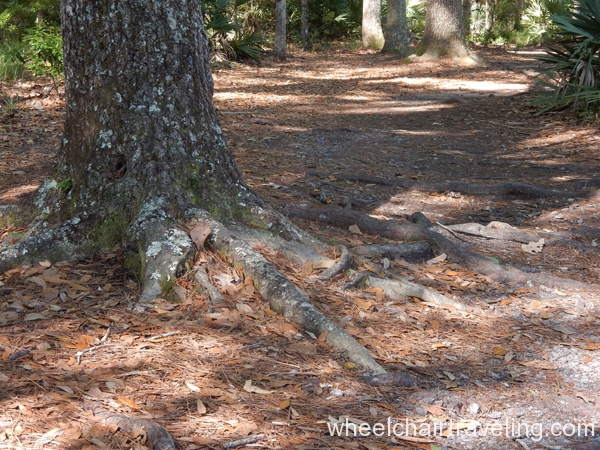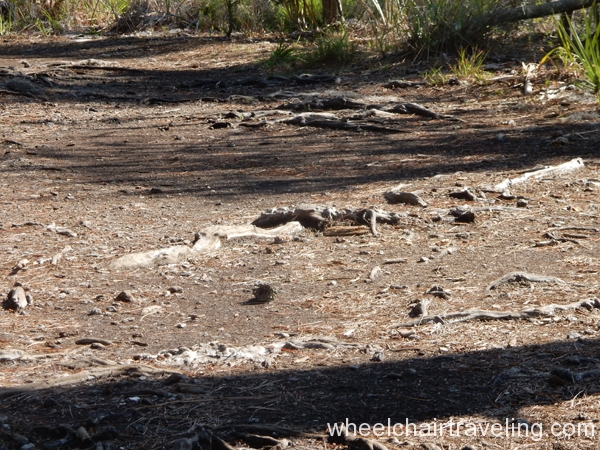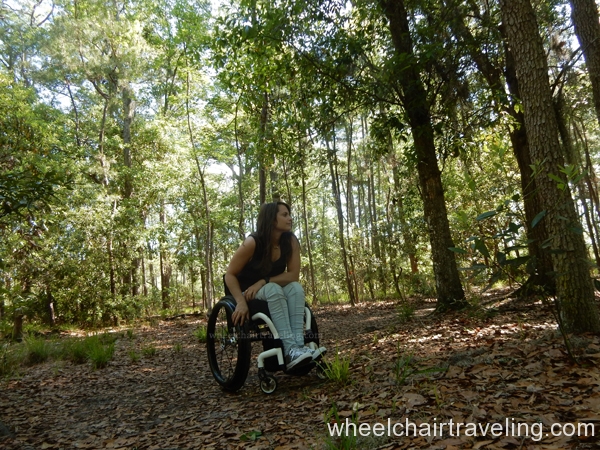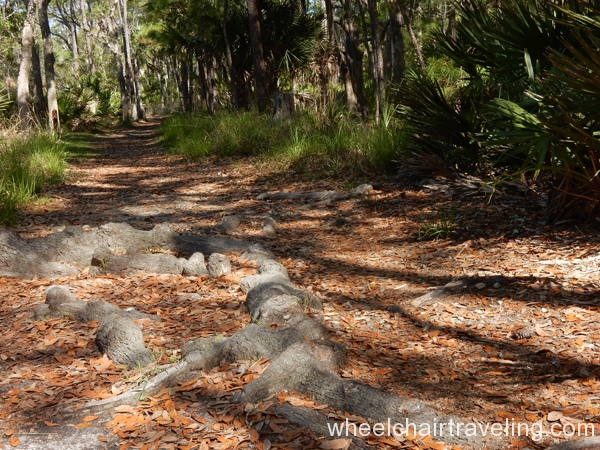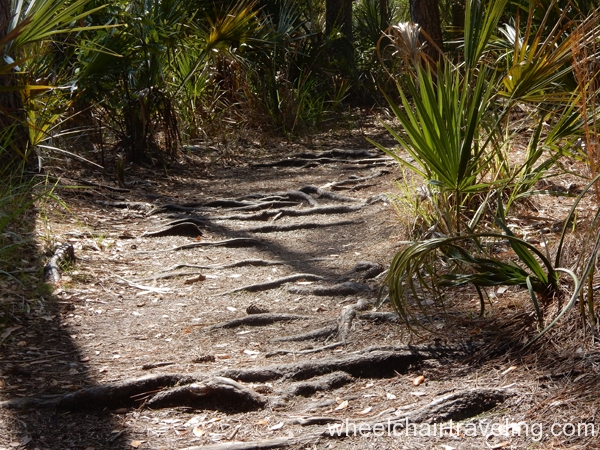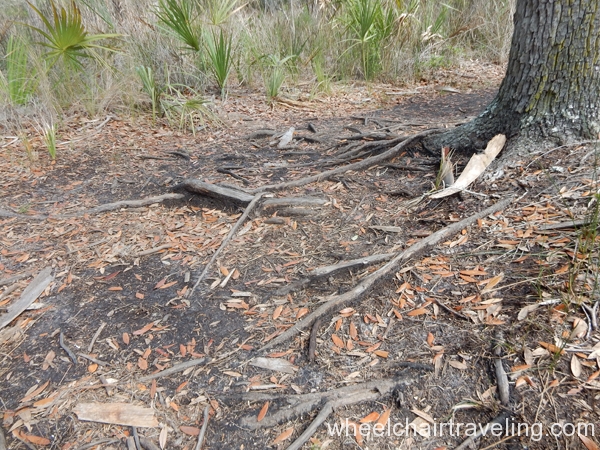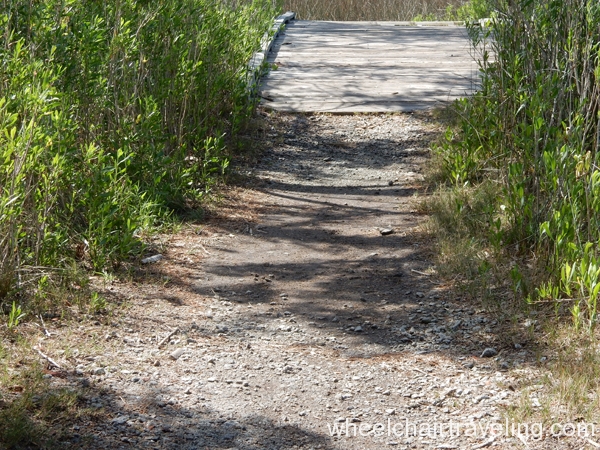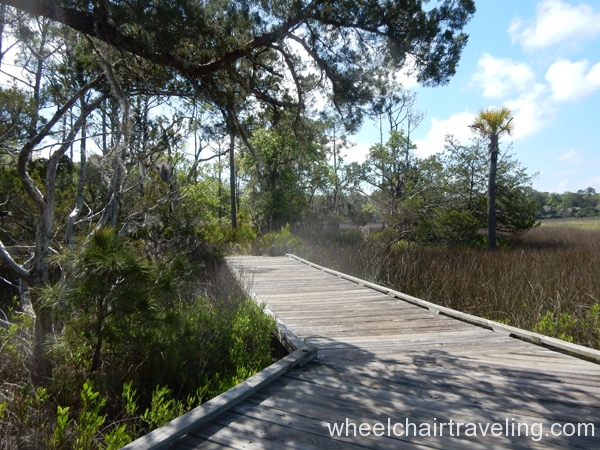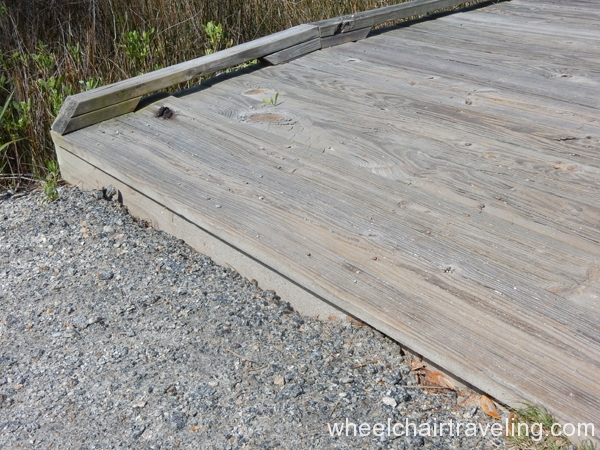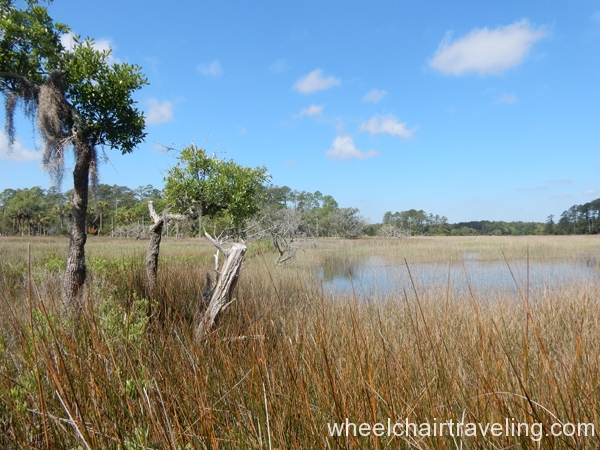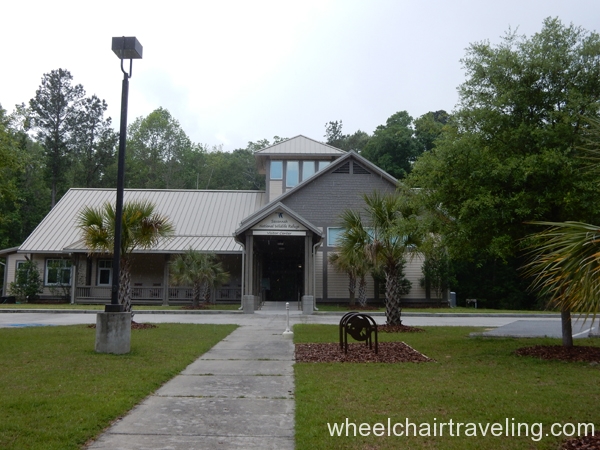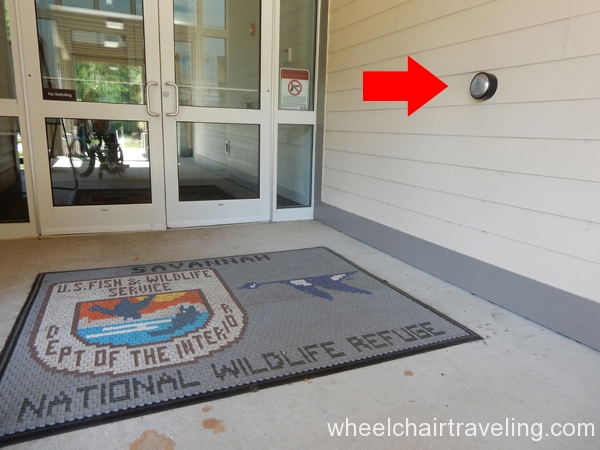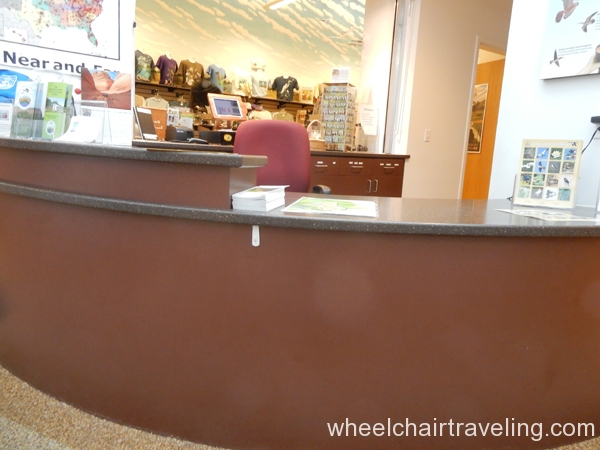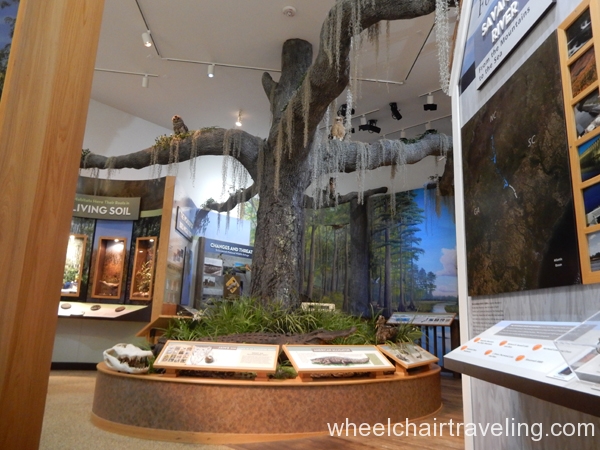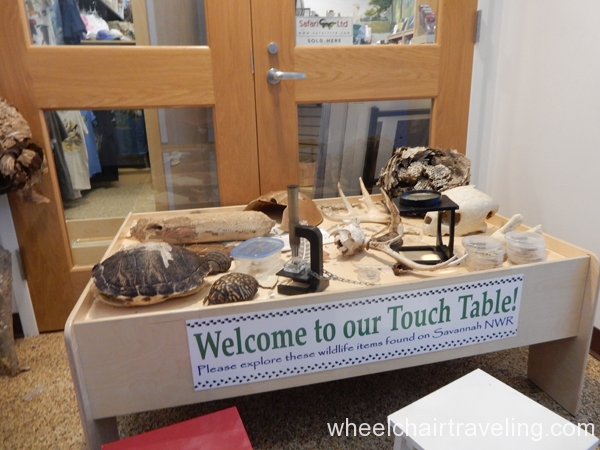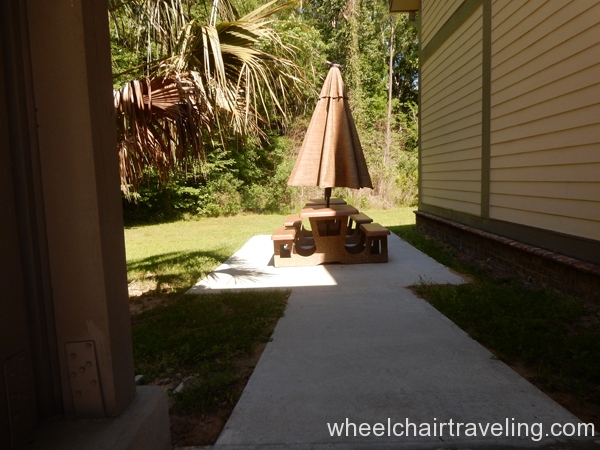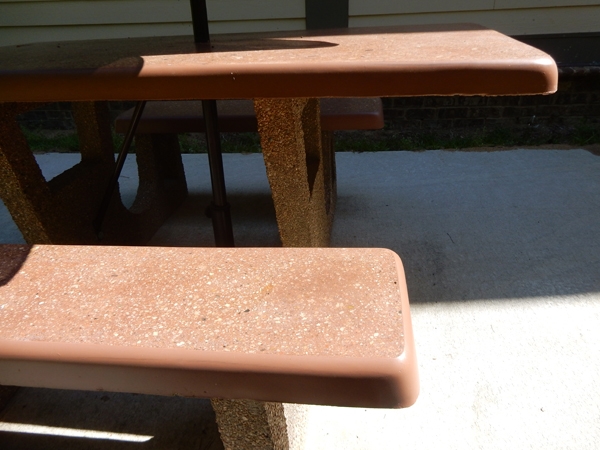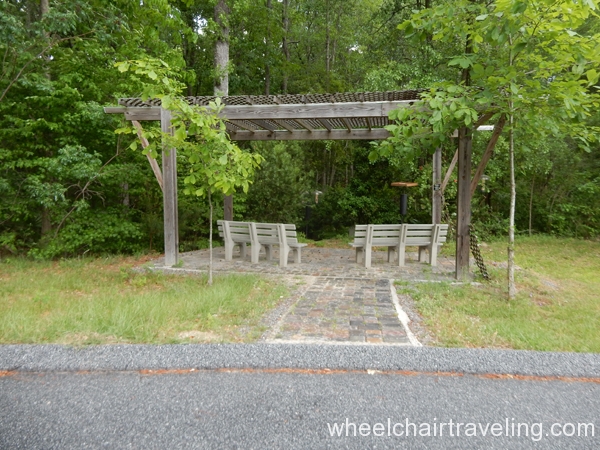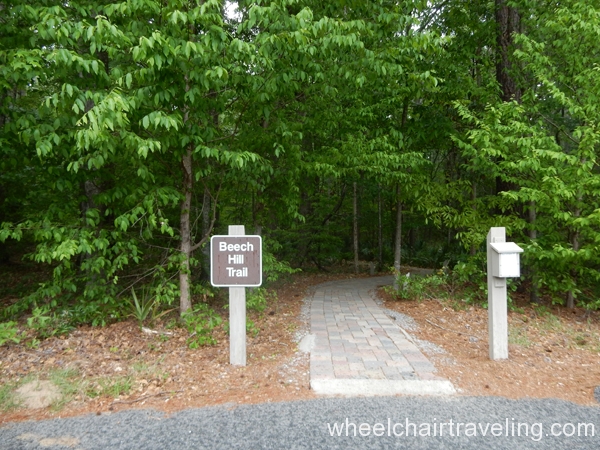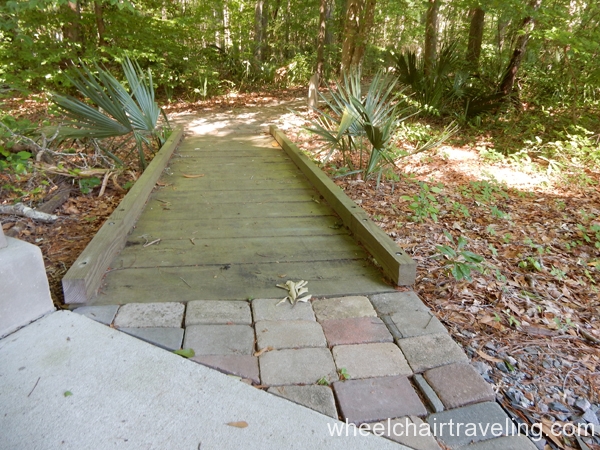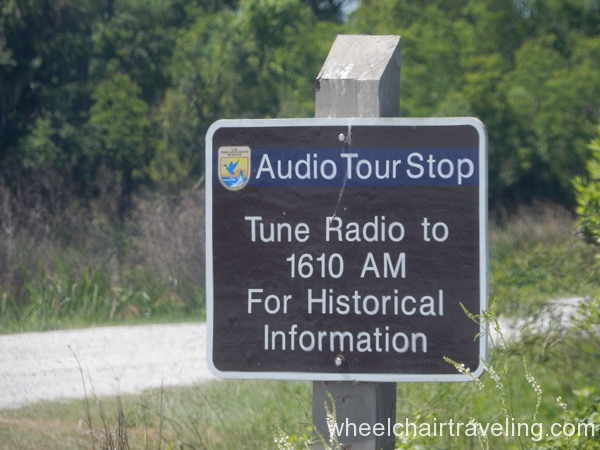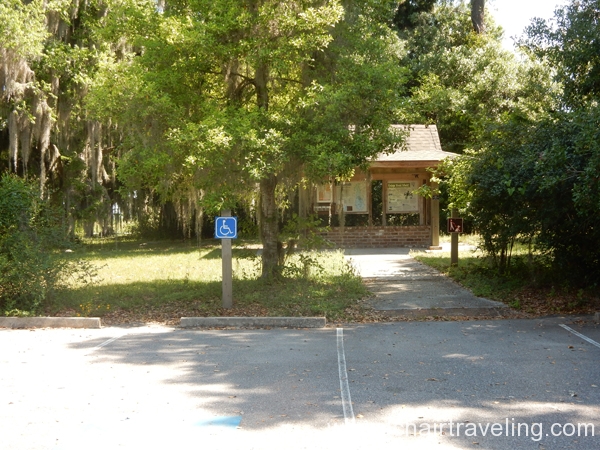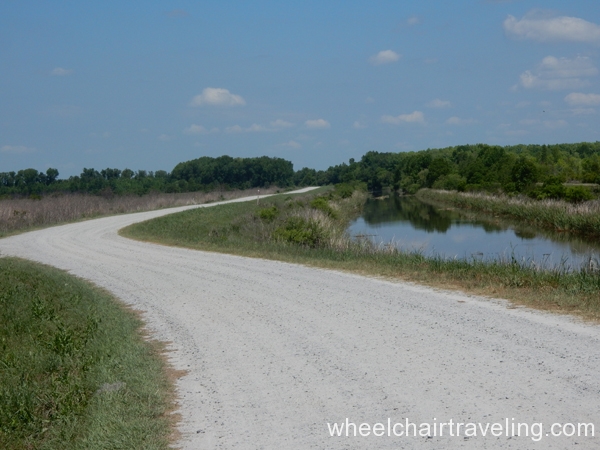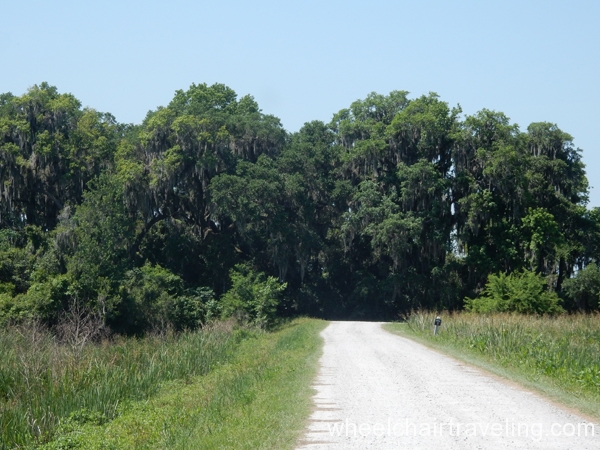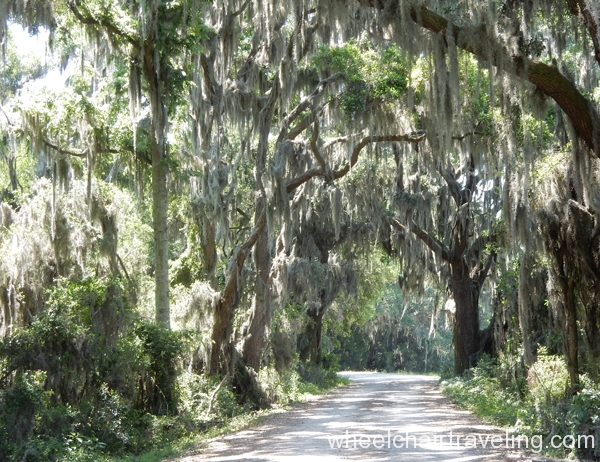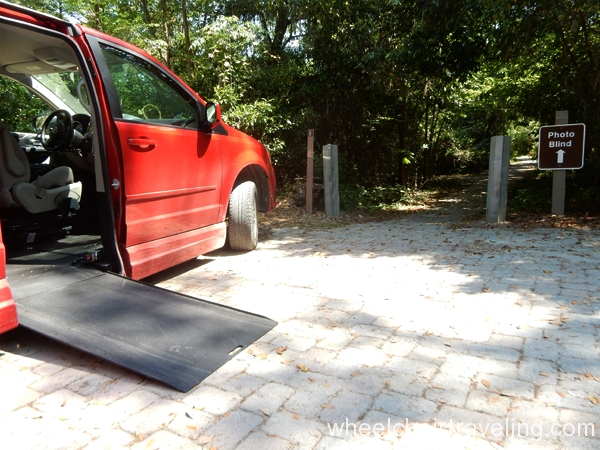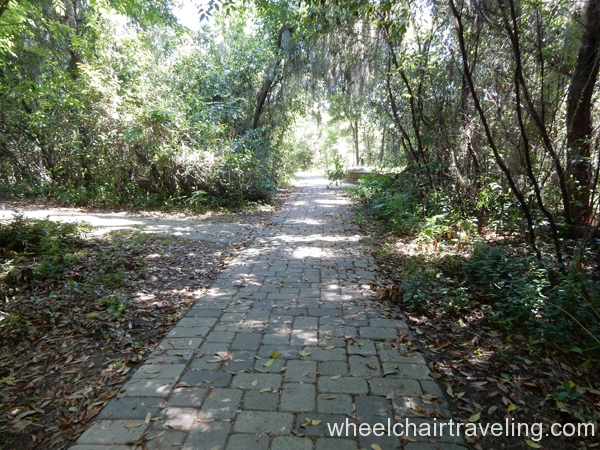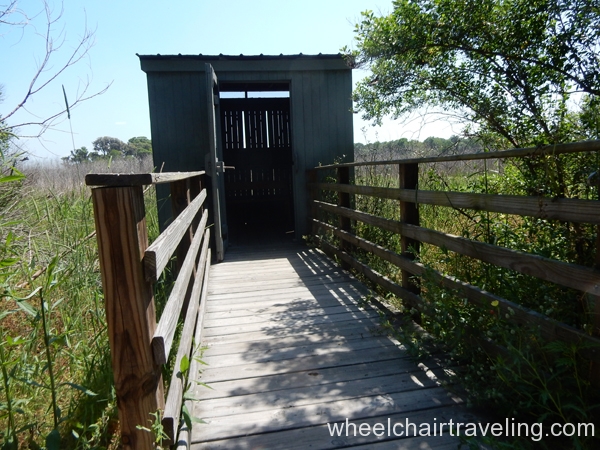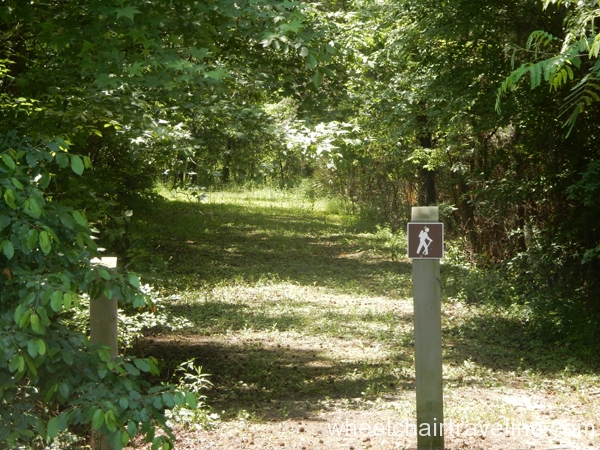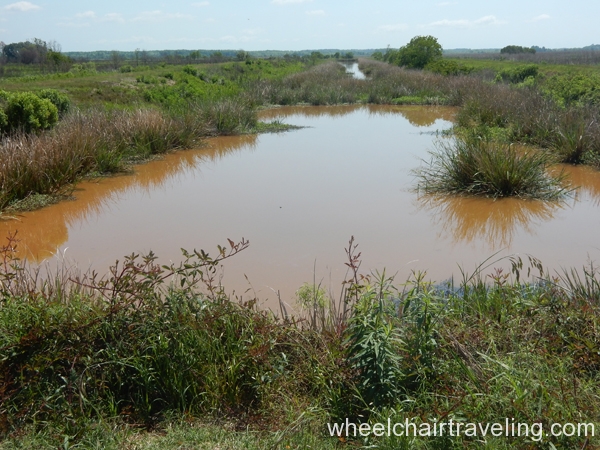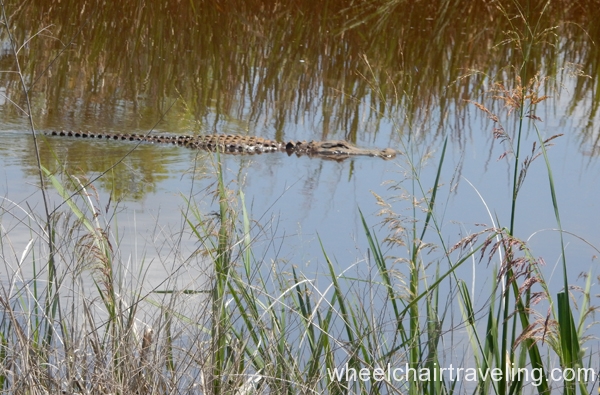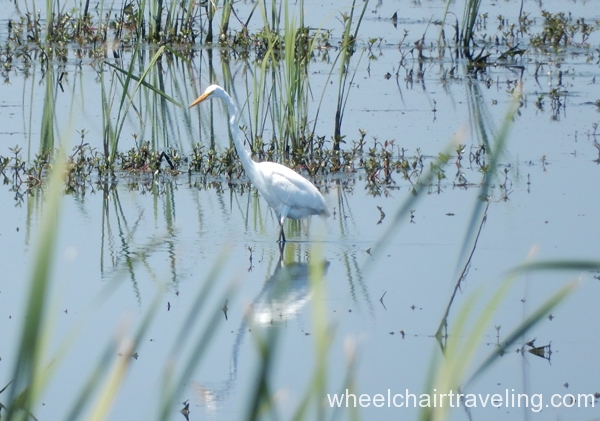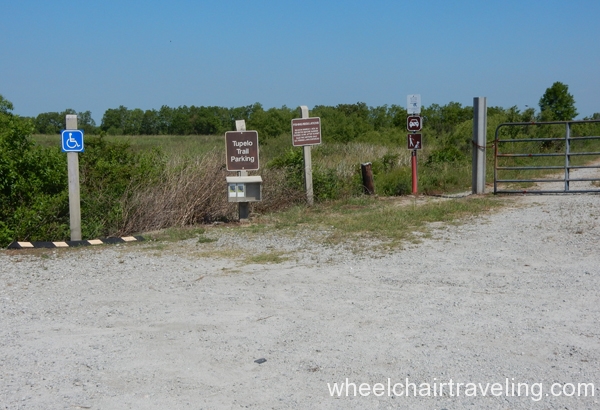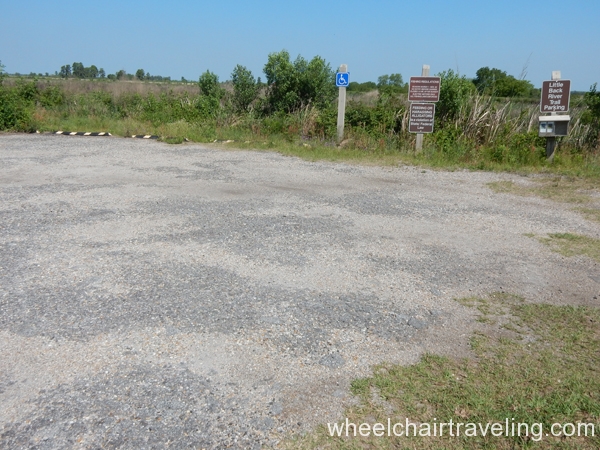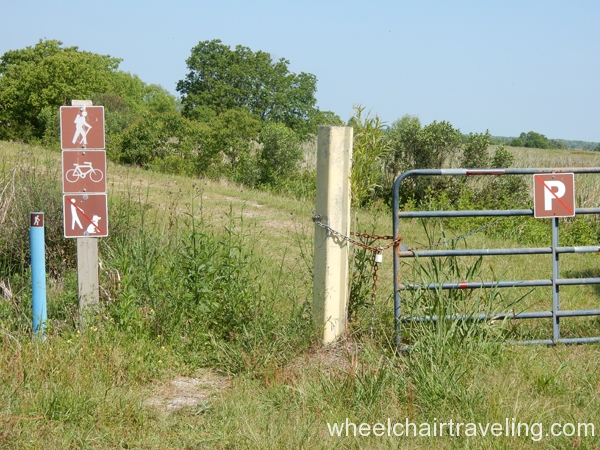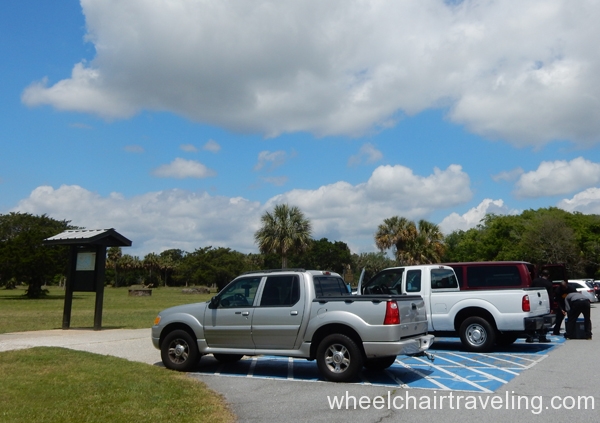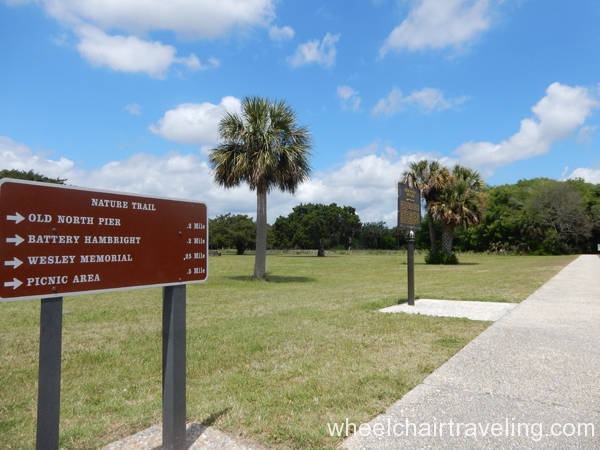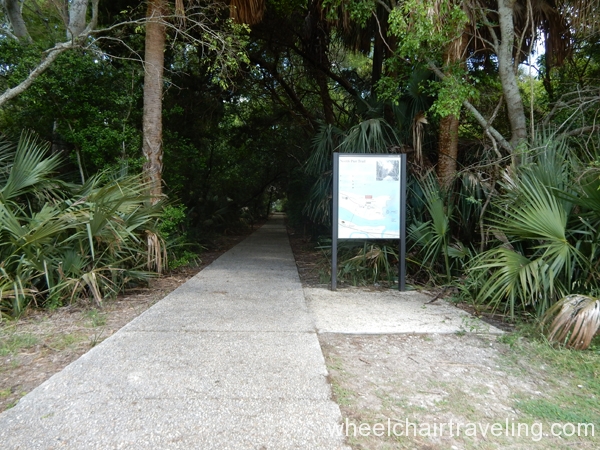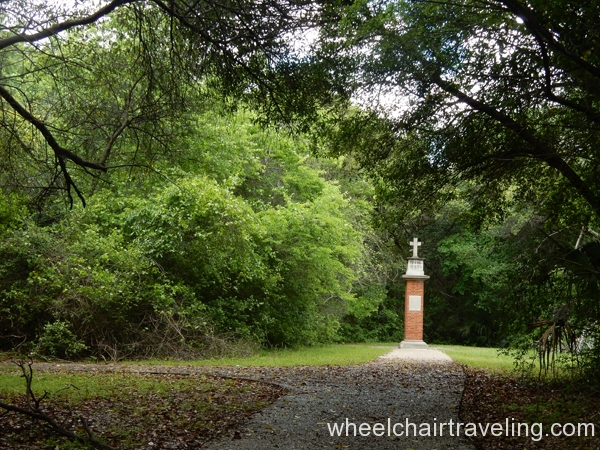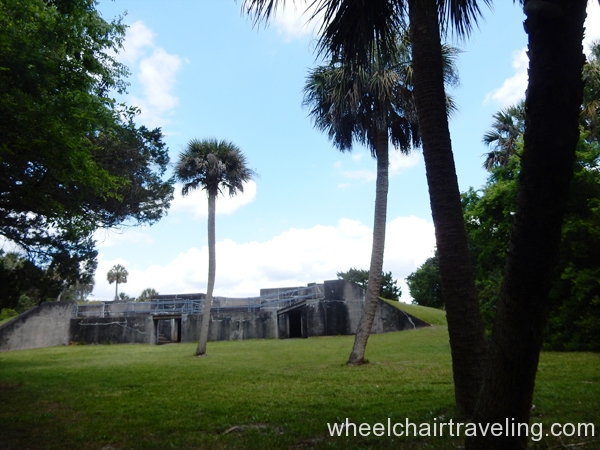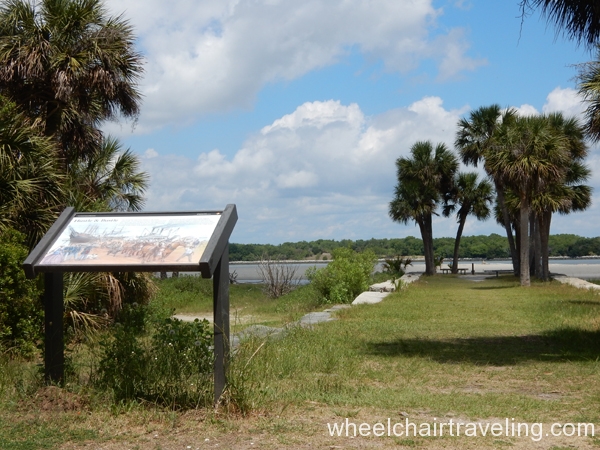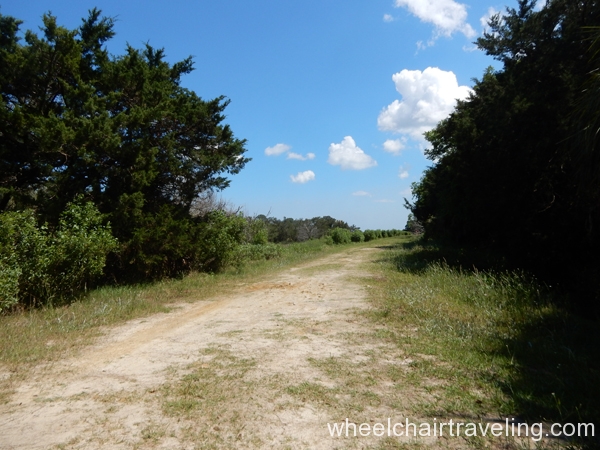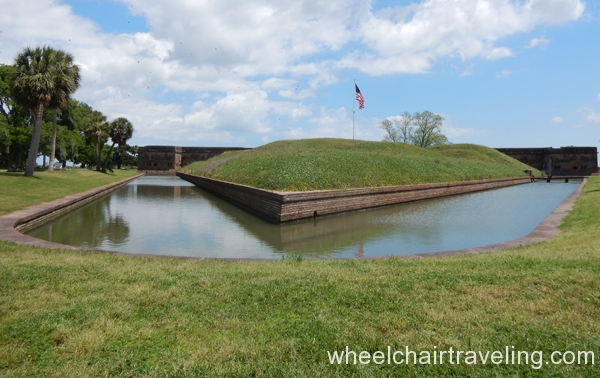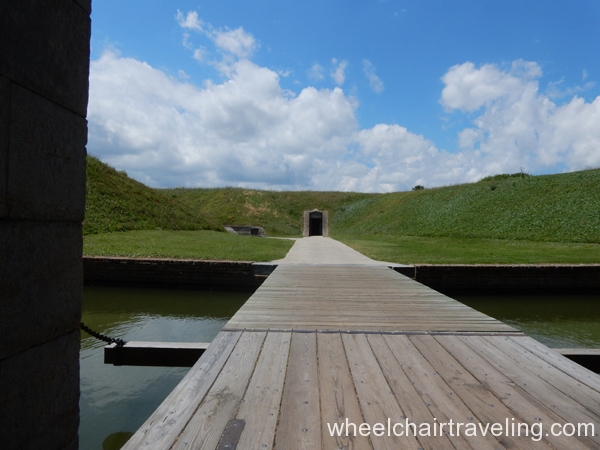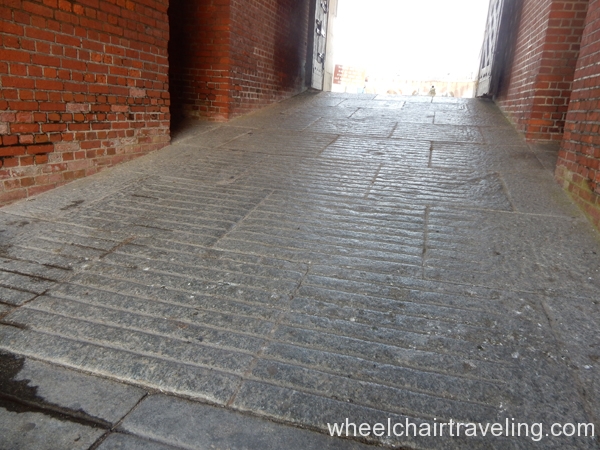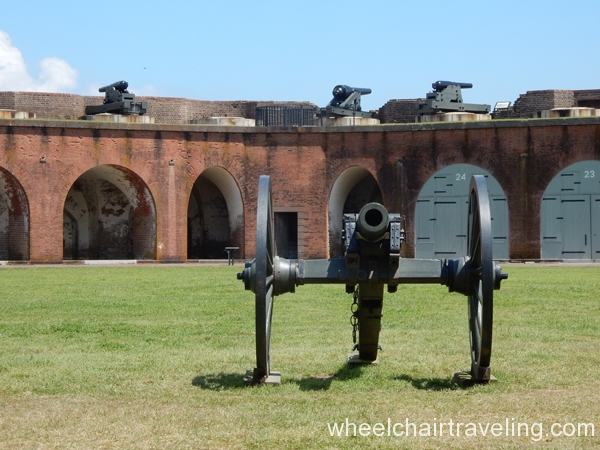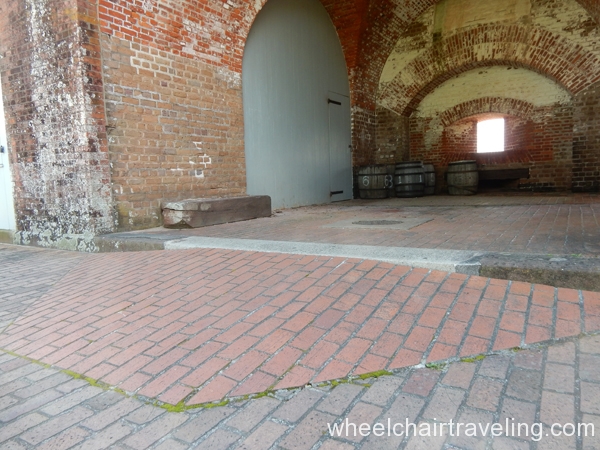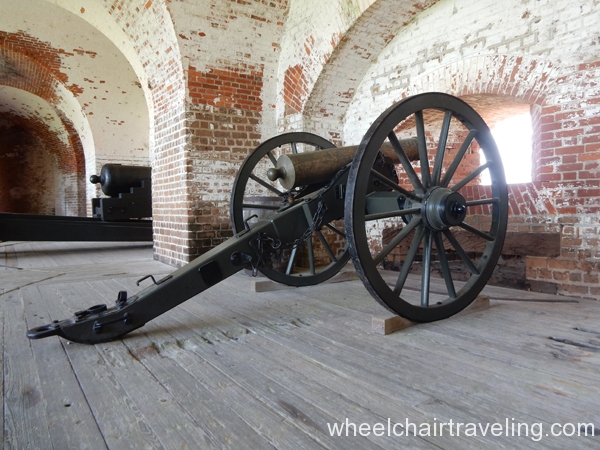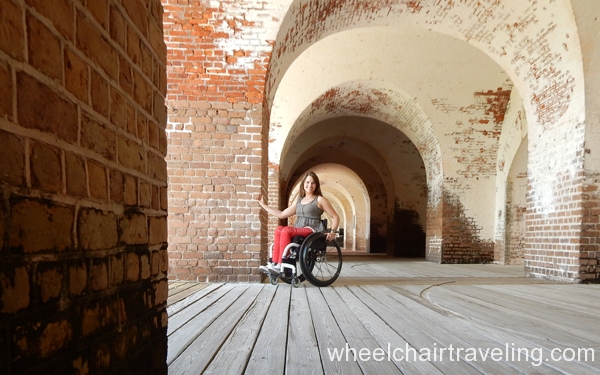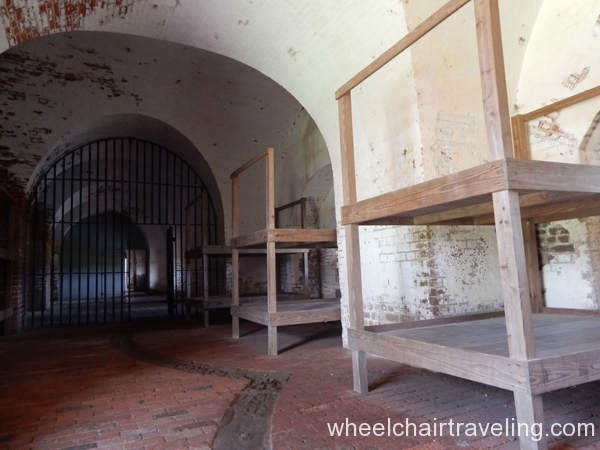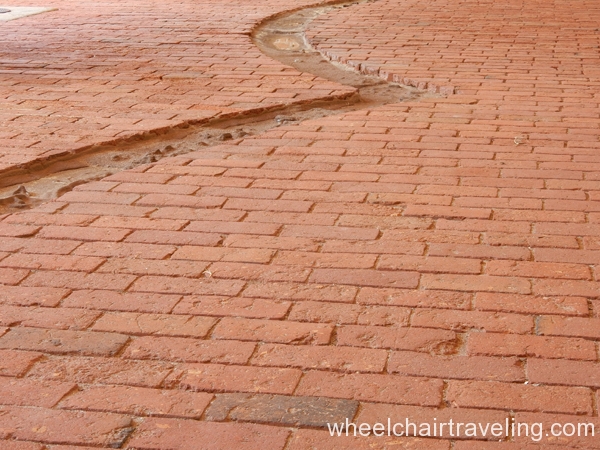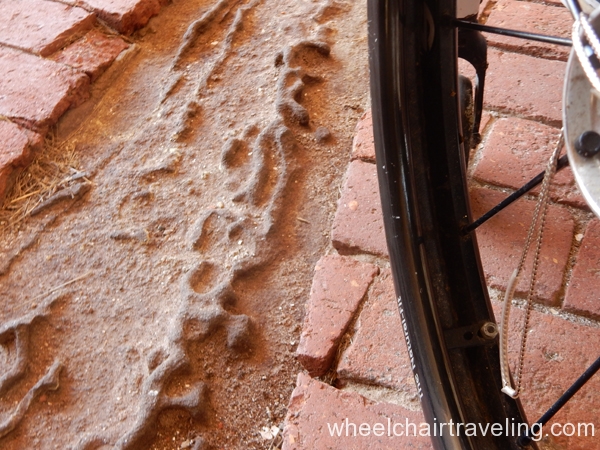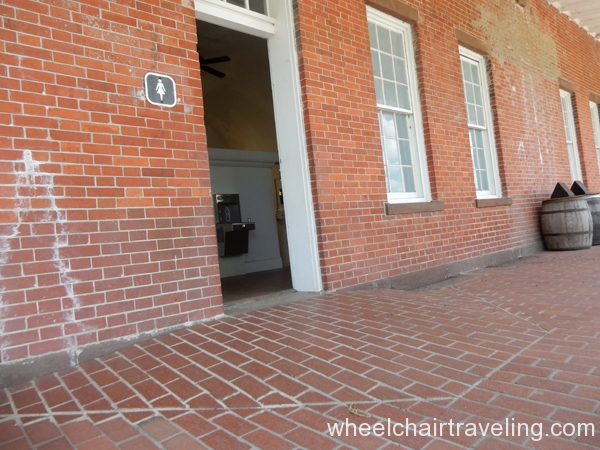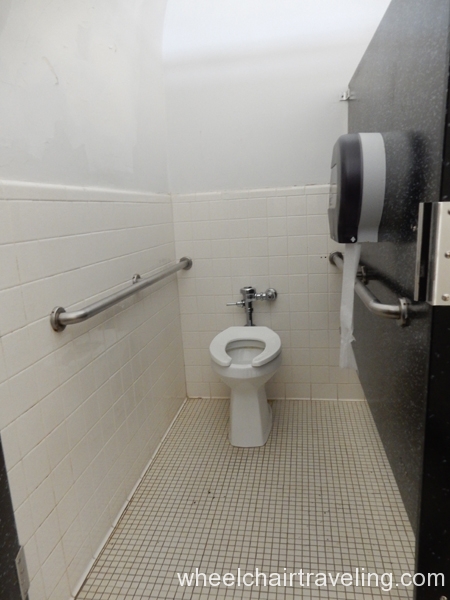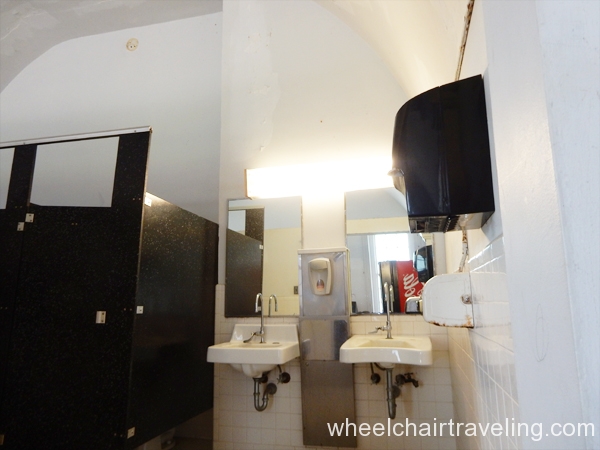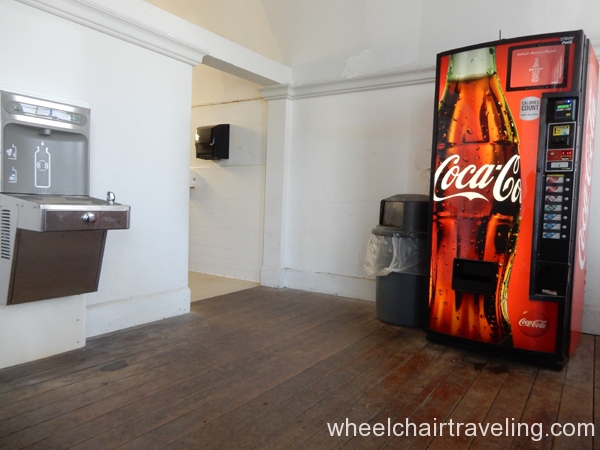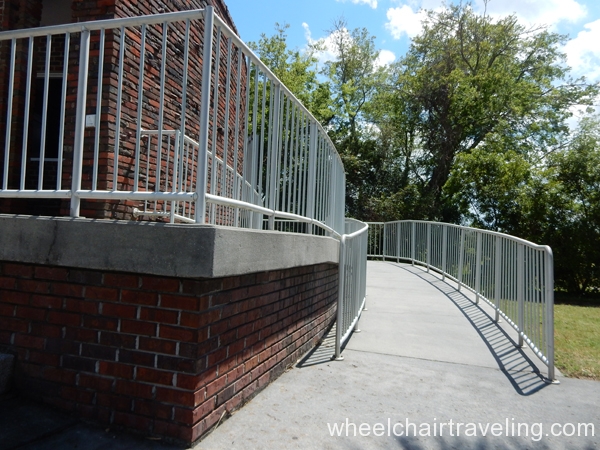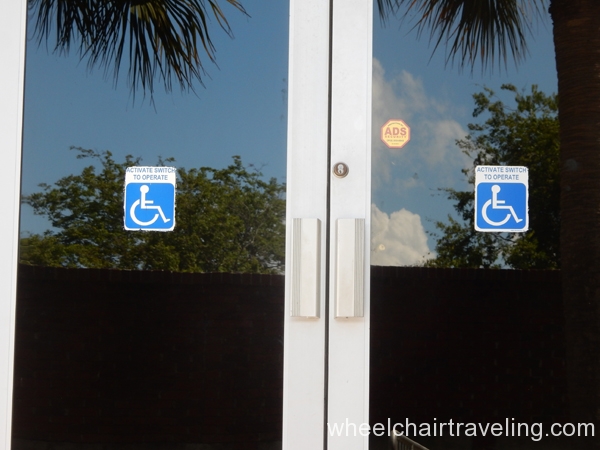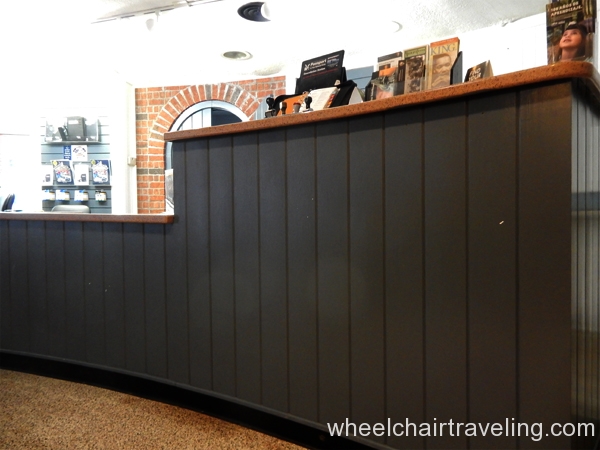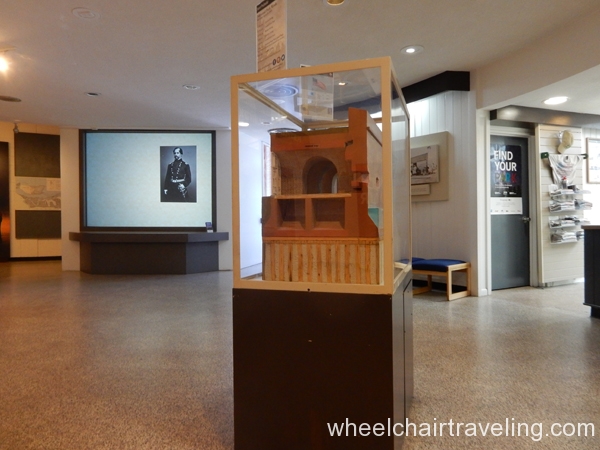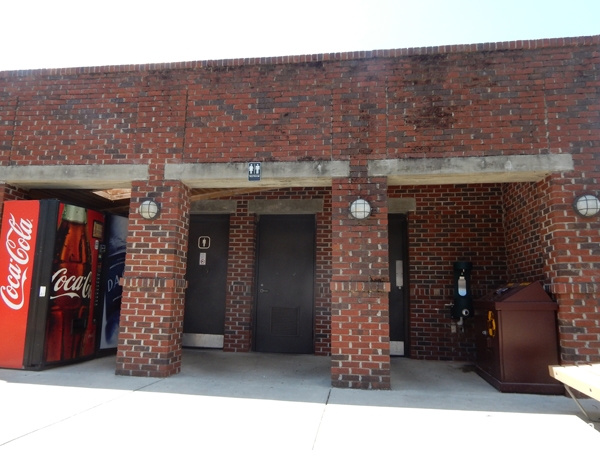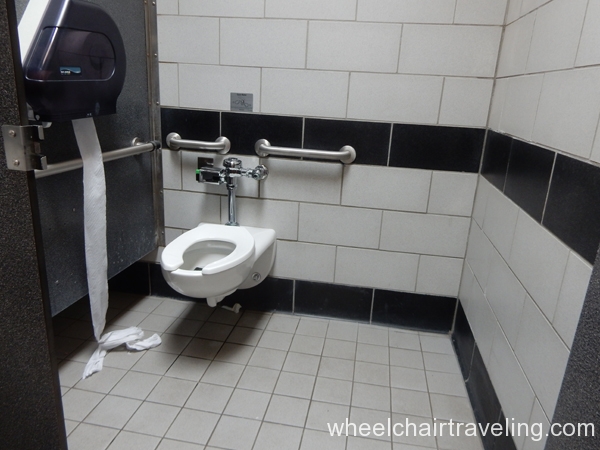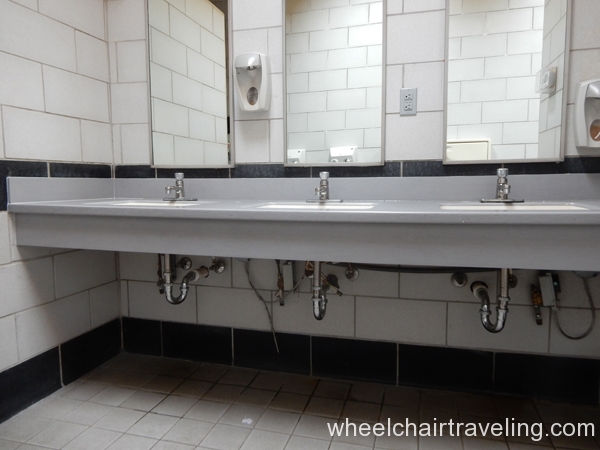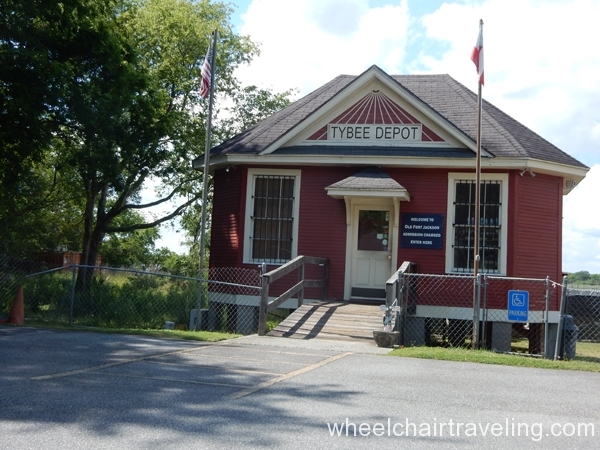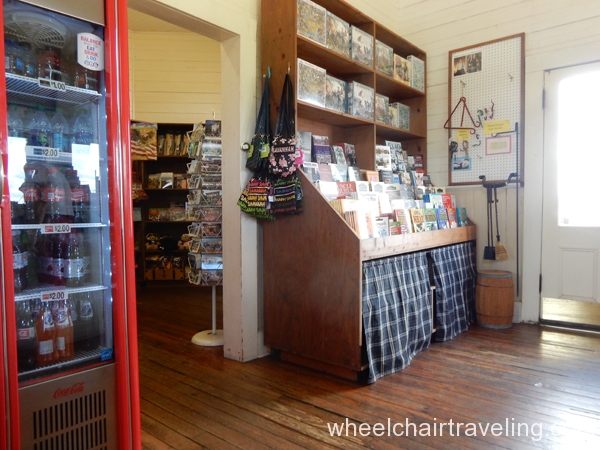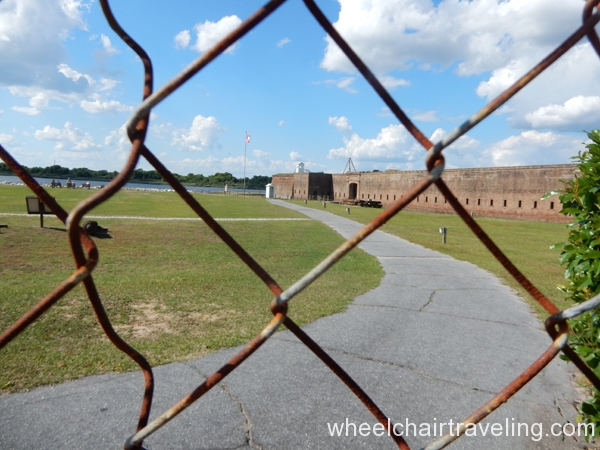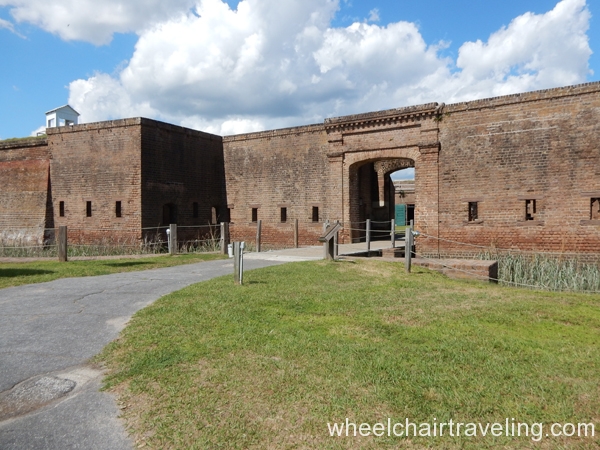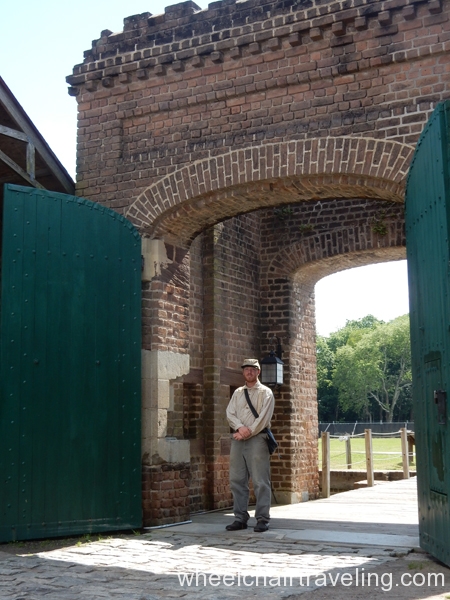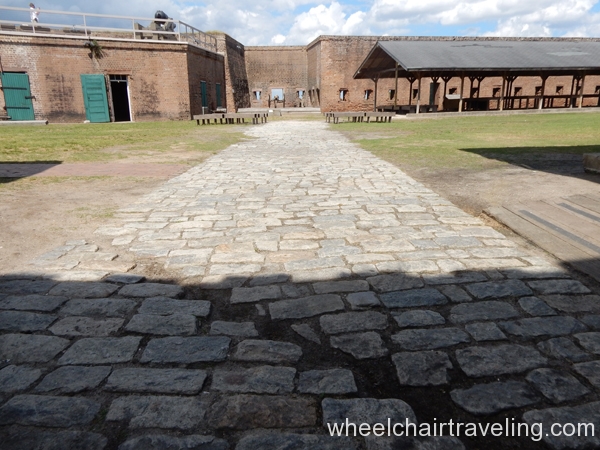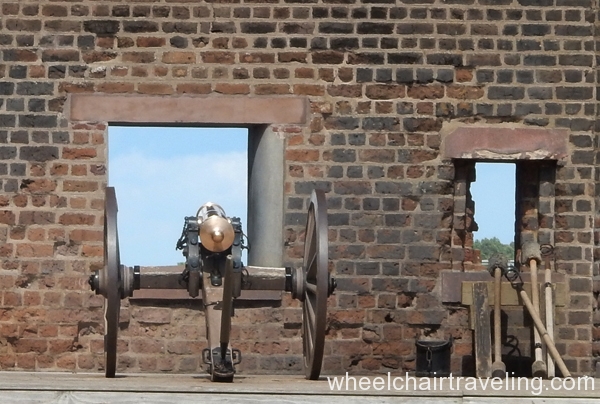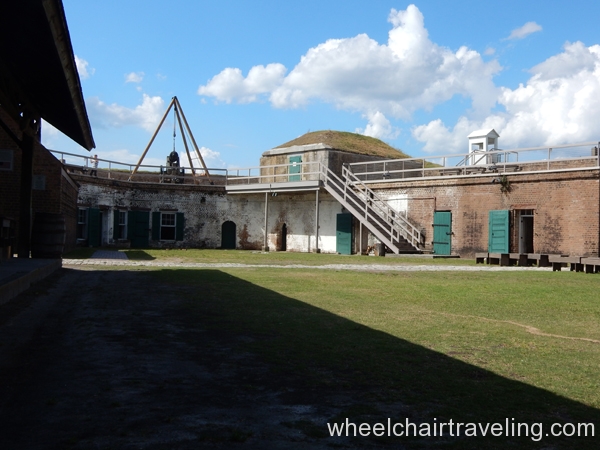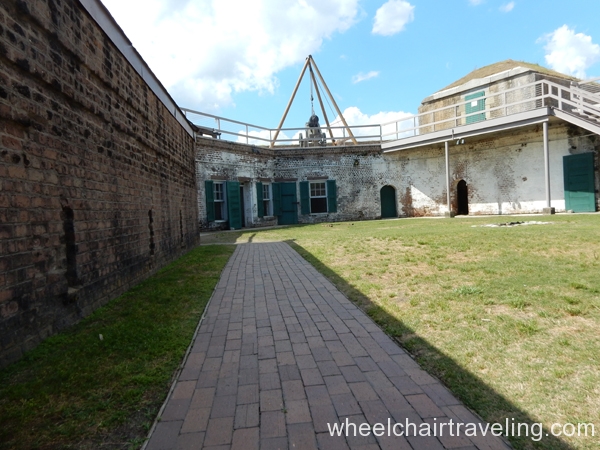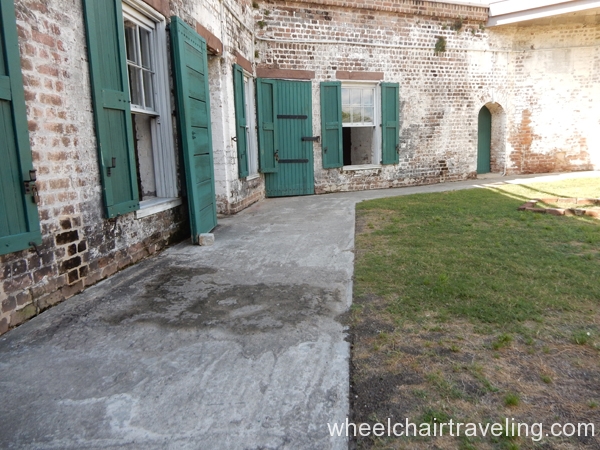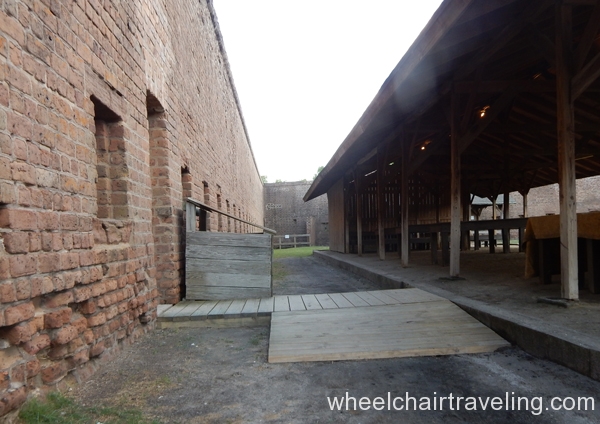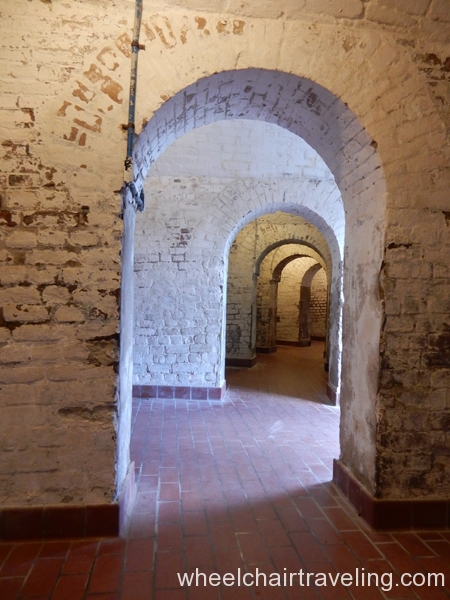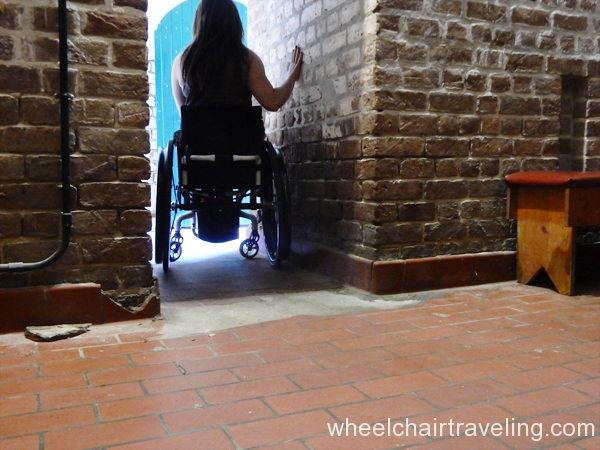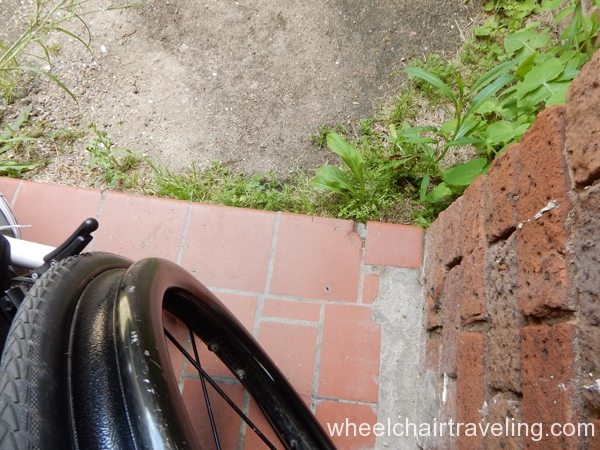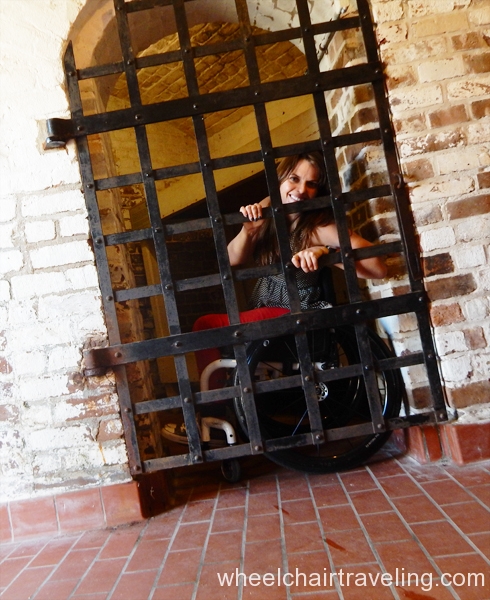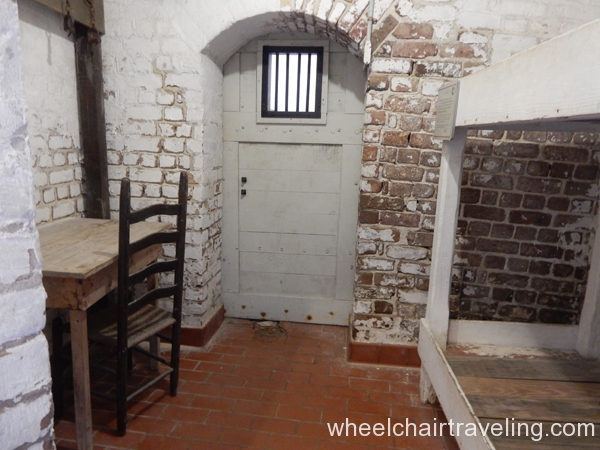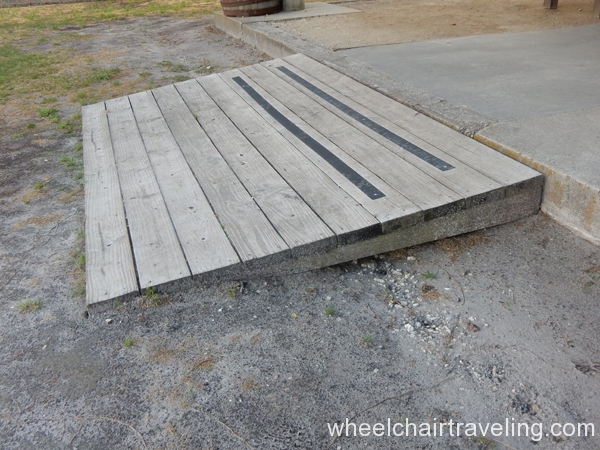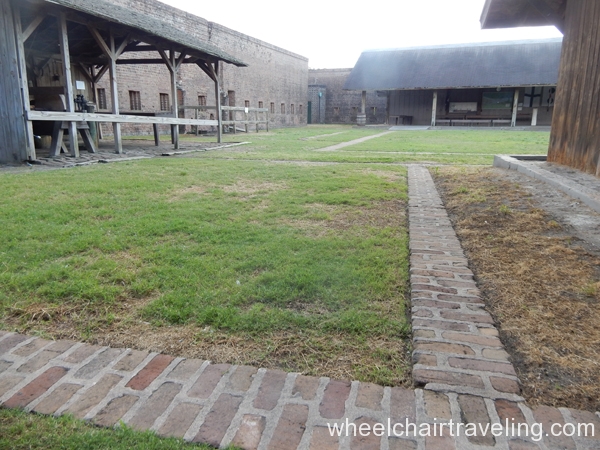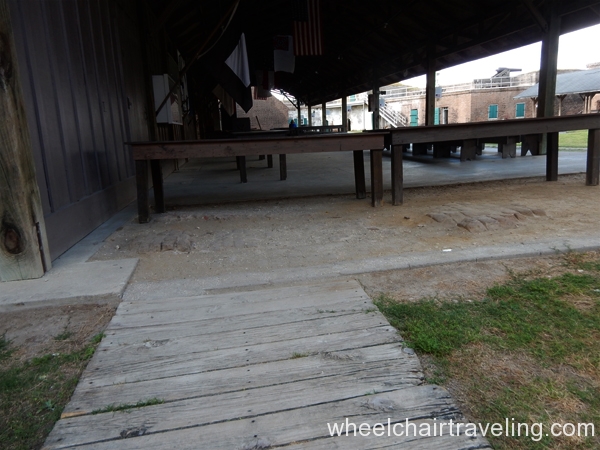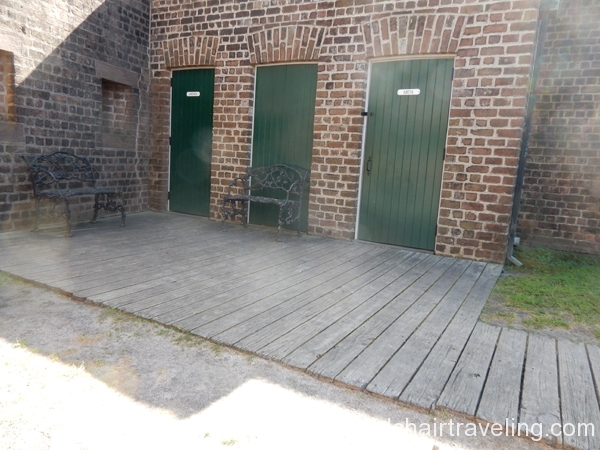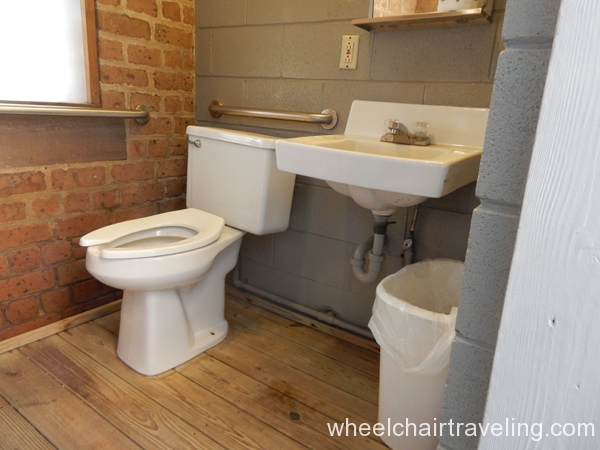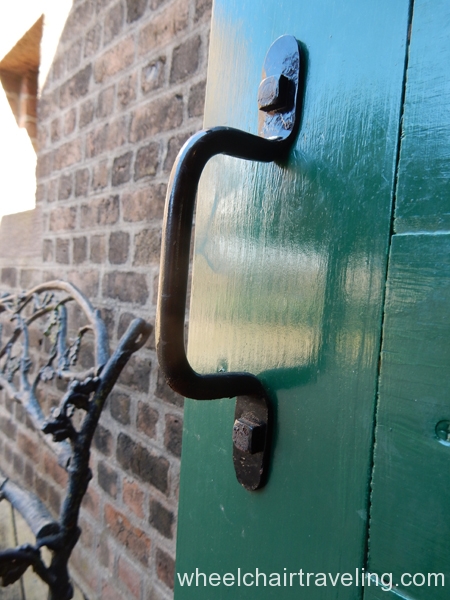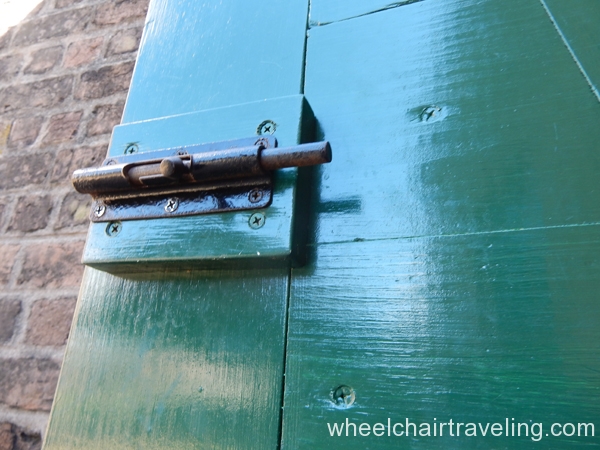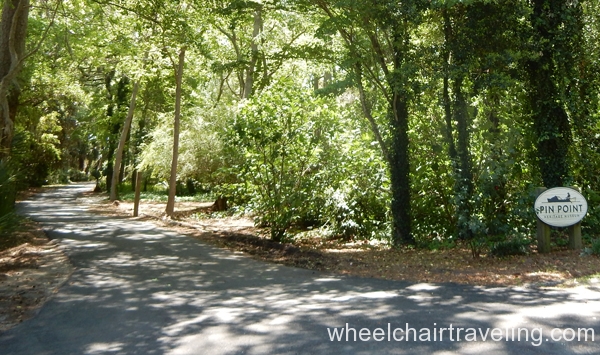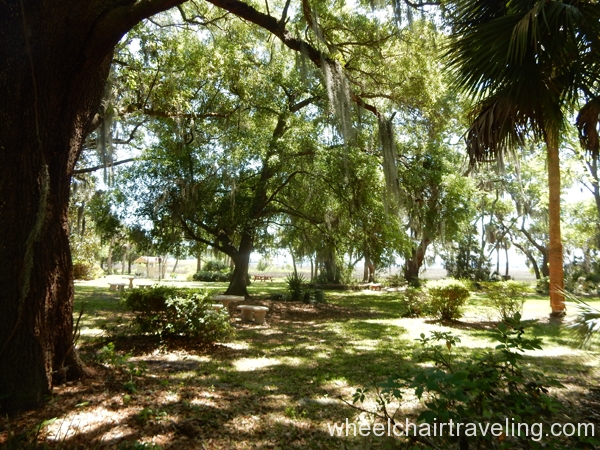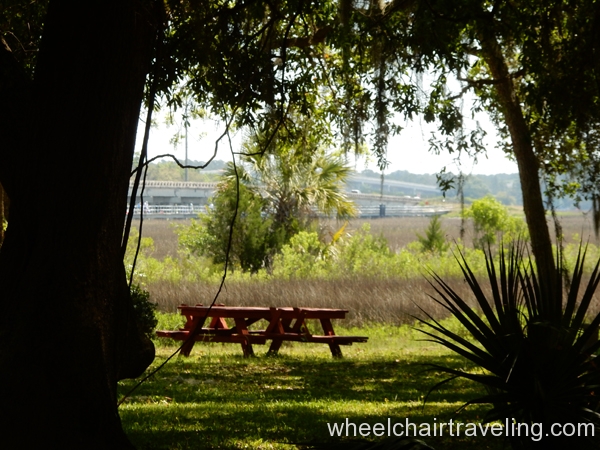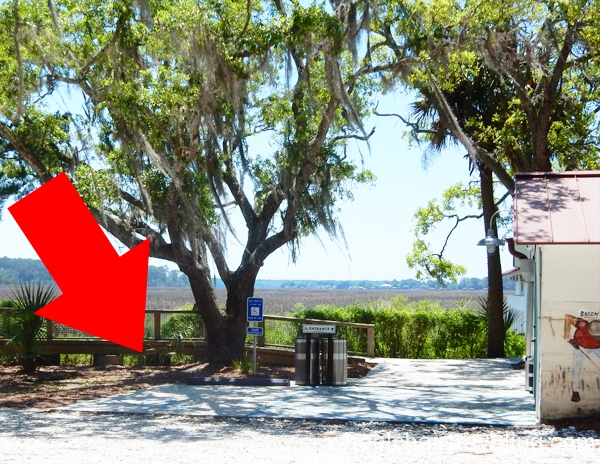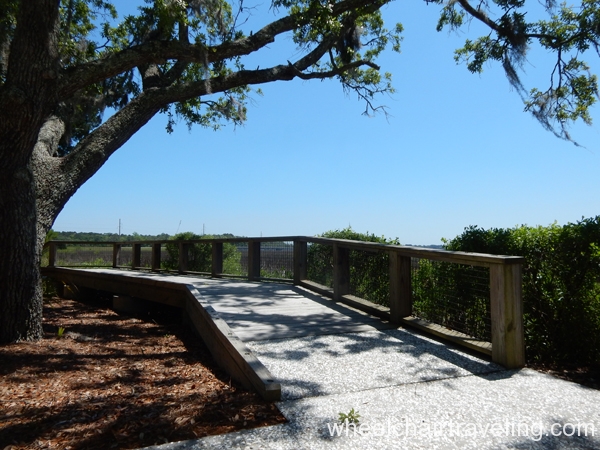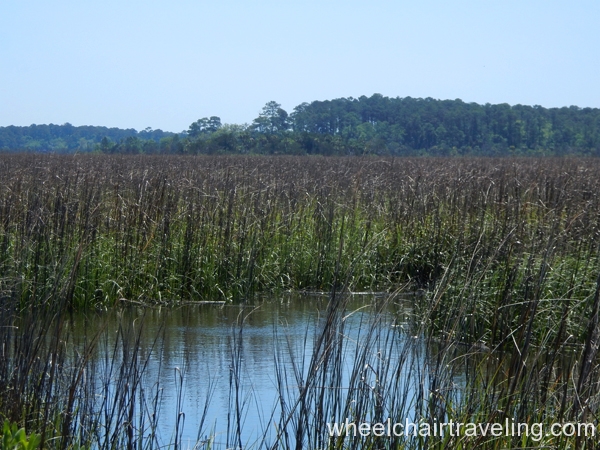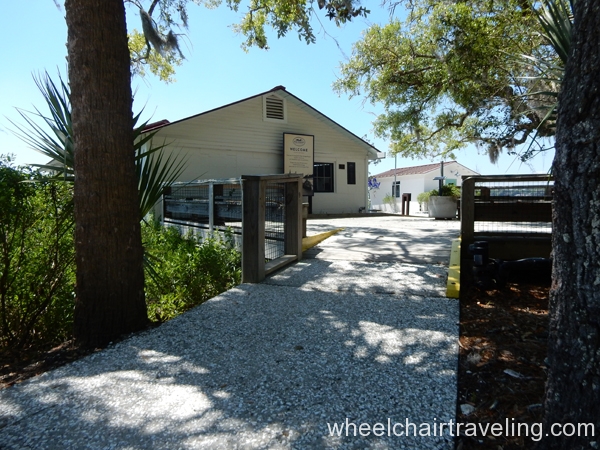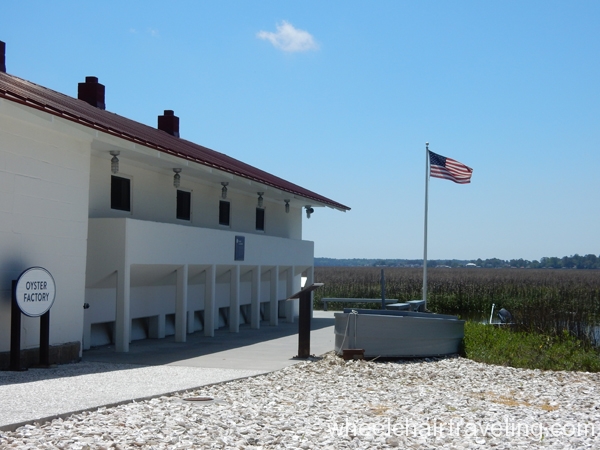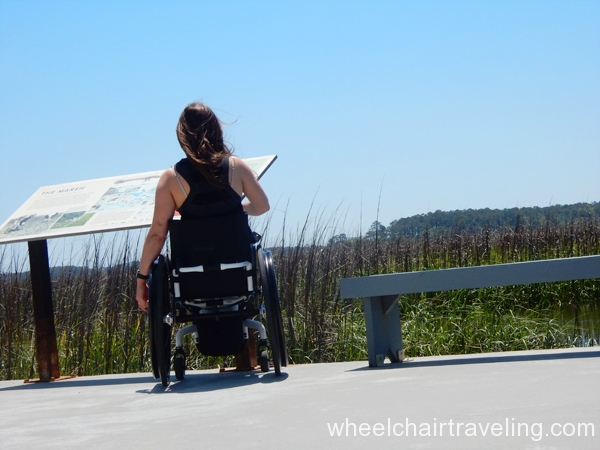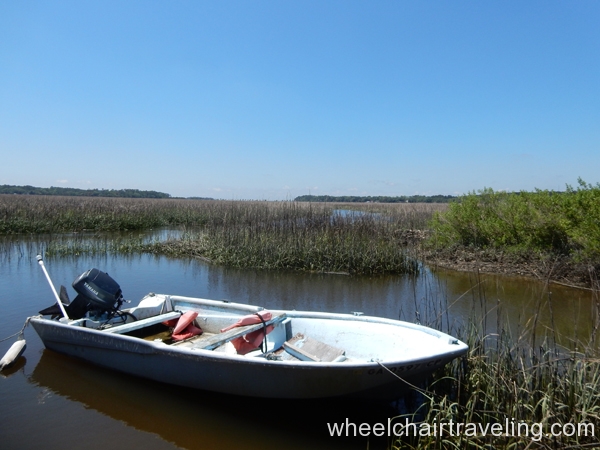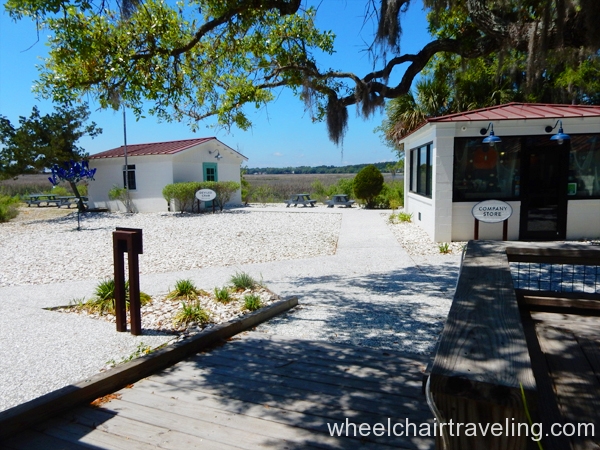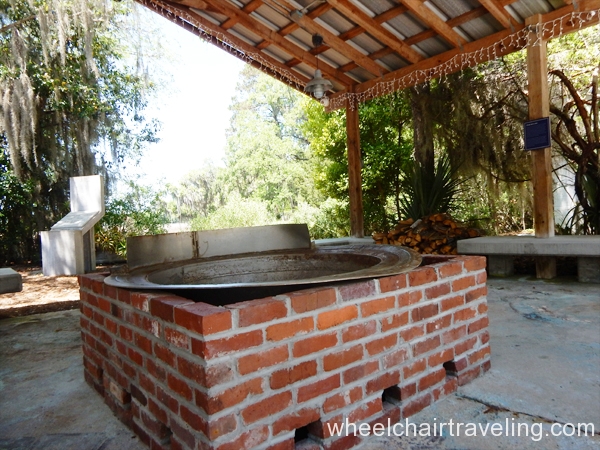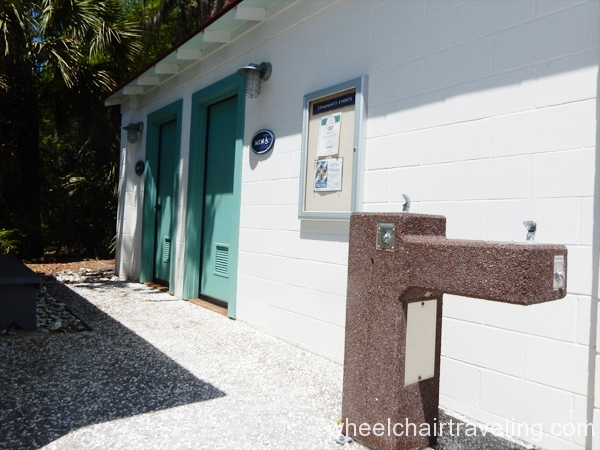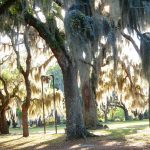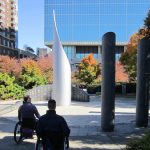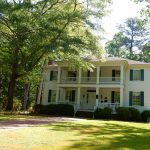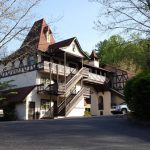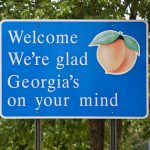Being a top travel destination in the USA, there are many attractions and activities in and around Savannah, Georgia. Here are 8 favorite attractions and activities I’ve found that you may want to add to your travel itinerary.
#1 Wormsloe State Historical Site and Plantation
Wormsloe State Historic Site and Plantation is perhaps one of the most photographed spots in Savannah, Georgia, at least the entrance is. Tour groups enjoy stopping at the gate or driving down the long, Oaktree-lined dirt road. If you travel further, you can enjoy a stroll in nature.
Within the property are a few trails. Start at Oak Avenue for the most barrier-free route to the historical Tabby Ruins-Jones Fort and House Site. After the museum and gift shop, this packed dirt and sand trail is pedestrian-only and wide enough for any wheelchair. A replicated campsite is set up along the way, along with informative panels that tell the history of the property.
The Tabby Ruins-Jones Fort and House Site backs up to a section of the wetlands, called Jones’ Narrow off the Isle of Hope River, a very picturesque spot with willow trees swooping over the embankment. From this first site, go left towards the Colonial Life Area to reach a wetlands wildlife viewing deck, which has been modified for wheelchair access. The Colonial Life Area has live people acting out life as it was in those days, and further up this trail is a Native American replicated home, but the short, side-trail to it is likely too saturated in roots for most wheelchairs to reach. Continuing on this trail to the parking lot is possible for many, see trail notes below.
Trail Notes
- Caution: The Pine Trail is not recommended for wheelchair hiking due to the amount of tree root barriers.
- Width: Most of the trail route (described above) is wider than 5 feet with the pathway from the historical site to the observation deck being the narrowest.
- Makeup: All trails are made up of packed dirt and sand with various debris. Weather and geography make the trail more saturated in certain spots. The firmest route of travel is down Oak Avenue to the historical site and back. A few soft patches are located between the historical site and the observation deck as well as from the Colonial Life Area back to the parking lot.
- Grade/Inclines: The property is flat. A little natural erosion may create small dips or inclines on the trail.
More Access and Visitor Details
- Entrance Fee: Pay inside the museum gift shop, which gives you access to the main part of the property. The counter is at a low height for comfortable wheelchair access.
- Parking: 2 designated parking spots are closest to the small museum and gift shop entrance. Van access is possible for both spots if one van backs up into it. A barrier-free pathway leads from the parking lot to the entrance of the museum and gift shop.
- Automatic Doors get you in and out of the museum and gift shop hand-free.
- Bathrooms: An accessible toilet is available just outside the museum and gift shop for both men and women, equipped with grab-bars and a roll-up sink. Hooks, soap dispensers, and hand dryers have been lowered for wheelchair access.
- Drinking Fountain: A modified drinking fountain is between the main doors for the men’s and women’s bathrooms. A drink vending machine is also located nearby.
- Picnic Tables: A small picnic area with a few tables is located adjacent to the museum and gift shop. Look for the access sign for the most wheelchair-friendly route. One table has been modified with an extended end for visitors in wheelchairs. The picnic area is covered by trees but you may likely encounter hungry mosquitoes, so come prepared.
- Golf Cart-Shuttle Service: If you have trouble navigating the property, there is a ranger-operated golf cart shuttle that can take visitors around available at the museum and gift shop. It can only transport about five people at a time and has no wheelchair access. Visitors wanting to use this service must be able to transfer themselves on and off the vehicle.
#2 Oatland Island Wildlife Center of Savannah
Oatland Island Wildlife Center of Savannah has a 1.75-mile long trail that meanders through lovely forests and wetlands to reach the various zoo-like animal habitats. These animals are unable to survive on their own in the wild and have often been traumatized, so observe them with peace and respect. Even without the animals, this place would still be worth visiting. Inside the Welcome Center, visitors will find a museum along with many animals and exhibits.
Trail Notes
- Makeup: The main trail includes asphalt, boardwalk, and packed-dirt surfaces. A few feet of the trail just passed the alligator habitat is sandy; proceed over this transition gap from the boardwalk to sand with caution. In only a few places, the asphalt was a bit rocky and broken up in some areas.
- Width & Cross-Slope: The main trail is about 5 feet wide with the occasional pull-out spot to stop and rest. Cross-slope is very minimal if present; the boardwalk in the marsh area has a more obvious cross-slope due to nature’s wear and tear.
- Grade/Inclines: The main trail has been designed to be almost level; a few spots have a slight grade (3%-5%). Some ramps to view the animals were a couple of feet long at a slight grade, but the one for the bison was the only long ramp and included a resting pad in the middle. You still may be able to see the bison on the ground but through a fence.
- Animal Habitats: Most habitat exhibits have a viewing area, often shaded. The wolf viewing area is completely sheltered and is the only one that requires going through a door, which may be too small for larger wheelchairs and scooters.
More Access and Visitor Details
- Entrance Fee: Required, paid at the admissions booth when you drive in.
- Parking: Several designated accessible spots, some with van access, are located behind the Welcome Center.
- Automatic Doors: No, but a ramp provides access in and out of the Welcome Center.
- Bathrooms: The most accessible bathrooms are in the Welcome Center. More bathrooms are located near the barn area, but no access modifications have been made.
- Drinking Fountain: No, but drinks can be purchased.
- Picnic Tables: A large covered pavilion is just outside of the Welcome Center with paved walkways to the tables, but no modifications have been made to the tables.
#3 Skidaway Island State Park
Skidaway Island State Park is located on the Isle of Hope along the Skidaway Narrows by Savannah, making it a favorite spot for birdwatchers. Visitors can also explore a small museum with a giant slot replication, or take to the trails and see the wildlife in action. Overnight camping is available as well as a few day-use picnic areas.
Trail Notes
A few trails exist within the park, and although no specific access modifications have been made, some wheelchairs will be able to explore sections of the trails or perhaps everything. A trail to try for at least part of the way is the Sandpiper Trail. This trail is a 1-mile loop that connects to the Avian Loop Trail for an additional 1 mile; however, the Avian Loop Trail has an exceptional amount of roots and sand, so proceed with caution. Early on, the Sandpiper Trail is a long boardwalk over a marsh, two other small boardwalks act as bridges later on this trail. On the Sandpiper Loop Trail, mile marker “I” is where most roots are located. When the Sandpiper Trail splits to loop, the pathway to the right has fewer roots. Hiking over so many roots is a challenge and tiring. Otherwise, go as far are you are able to and then turn around.
The Nature & Walking Trail begins before you reach the park’s main gate; running parallel to the road, it ends at the Interpretive Center. If looking for even more exercise, then consider this gravel-rock trail, but other trails in the park are much more scenic. The last trail in the park that may be possible to explore exploring is the Big Ferry Trail Loop. The beginning of this trail is a historic road. Some visitors with wheelchairs can travel this to reach the Alligator Ponds, but beyond this, trail access is unknown. This trailhead is located past the picnic tables and has no designated parking.
- Makeup: Most of all the trails are made of packed dirt and sand with overlying debris. A few portions are a boardwalk. Some portions of the trail get soft due to the natural elements and can be hard to move through. The Nature & Walking Trail is the only pathway made up of gravel rocks; the size of the rocks is not ideal for most wheelchairs.
- Width & Cross-Slope: Trails are all about 5 feet wide, sometimes the trail narrows a bit. The many roots on the trails create cross-slopes, but overall nothing was over 3%.
- Grade/Inclines: The bridge that leads to the Avian Loop Trail is a curved incline (about 7% grade). On the trails, inclines are minimal, about 1-3%.
- Barriers: Roots may be an obstacle; often it is possible to go around the roots, but other times the only way is directly over. The transitions between the trail and the boardwalks create a small step (about 2 inches), which may hinder some power wheelchairs and scooters. Manual wheelchairs may be slowed down in some sections of the trail that are thick with debris. Some sand is expected and more prevalent on the Avian Loop Trail.
More Access and Visitor Details
- Entrance Fee: A small Georgia State Park fee is required, paid at the kiosks in the parking areas. Getting to some of these kiosks may be challenging for some wheelchair users.
- Parking: Two designated spots are located closest to the Interpretive Center, but are not marked with lines to prevent overlapped parking. A couple of accessible parking spots are over the covered group shelter and more are found at the bike rental building.
- Interpretive Center: The Interpretive Center has a small museum with fossils, artifacts, and other park-related educational material. The ramp to get inside from the parking lot is about 20 feet at about a 7% grade. There are no automatic doors. An approximately 5ftX7ft stall in both the men’s and women’s bathroom has been modified for access with grab-bars. No lowered hook is offered, but you will find a roll-up sink.
- Picnic Areas: The majority of the picnic areas are under-covered shelters usually with a barbecue cooking grill, but not all are accessible. The most accessible is Picnic Area #4, which includes designated parking, a barrier-free entrance, a modified table with an extended end, a preparation table, a power outlet, and accessible bathrooms. The bathroom has grab-bars and a roll-up sink. Picnic Area #1 has barrier-free access to the tables via a paved pathway, but no other modifications. It is possible to reach picnic Area #2 by going over the grass and entering on the left side (all other sides have steps).
- Camping: Campsites that have been modified for access are found in Camping Area #4, and are available to both tent and RV campers. The most accessible campsites are clearly marked as #65, #67, and #87. What makes them more accessible is the level surface, a picnic table with an extended end, a cooking grill that has been raised a little, and being closer to the bathrooms and laundry room. The bathroom’s modification includes a flush toilet modified with grab-bars, a roll-up sink, and a roll-in shower equipped with a mounted bench and hand-held shower nozzle.
#4 Savannah National Wildlife Refuge
Savannah National Wildlife Refuge is a great way to explore the wetlands of Savannah from the comfort of your vehicle. The 4-mile, one-way road gives visitors an audio tour around Laurel Hill Wildlife Drive, where many animals and wildlife can be viewed, the most popular being alligators (Map). April-October, you will also see a variety of local and migrating birds. The refuge also has about 40 miles of pedestrian trails, so be mindful of hikers and other vehicles. Hunting and fishing are permitted as long as rules are followed in the designated areas.
Visitor Center
Begin exploring at the Visitor Center, located a few miles from the refuge of Highway 17 on the way to Savannah. Inside you will find a small museum and gift shop; a lowered section at the information desk allows easy access for wheelchair users. On the backside is a short trail.
- Entrance Fee: None
- Beech Hill Trail: A 2-minute trail into the Savannah woods located directly behind the Visitor Center. The shaded trail is a little over 3 feet wide and primarily made up of lined stone, which can feel a little like cobblestones, but the tops are more level for a smoother surface. A short bridge uses barrier-free transitions.
- Parking: A couple of parking spots are designated for those with access needs.
- Automatic Doors: Yes, at the front and back doors.
- Bathrooms: Inside the Visitor Center are bathrooms for both men and women, each with one 5×5 foot stall that has been modified for accessibility with grab-bars; a semi-roll-up sink is also provided.
- Picnic Tables: 2 tables with umbrellas are located on the backside of the Visitor Center, and one has a semi-extended end for better wheelchair access.
Wildlife Drive Tour (1 hour, 4 miles)
The property is very sunny with a few sections of the trail shaded by oak trees. A few turnouts allow drivers to pull over so others can pass or take photos. In addition to the audio tour, a few information panels are displayed along the route.
Along the drive, there are a few nature trails: the Plantation Island Trail (2.5 miles), the Recess Plantation Trail (3.2 miles), and the Raccoon Island Trail (1.3 miles). Trailheads are marked by a wooden signpost, which can easily be missed if not looking. Of these trails, the Plantation Island Trail is a looped trail. These trails are naturally flat and consist of packed dirt, grass, and other natural debris. Accessible modifications have been made to the Cistern Trail. Many “no parking” signs are scattered throughout the drive, so pick your spot wisely.
Trails in the Wildlife Refuge
- Cistern Trail and Photo Blind (0.1 miles): This loop trail is one of the first stops along the Wildlife Drive Tour and leads from the parking area to a small wooden shack used as a “Photo Blind” for wildlife viewing; windows slide open. Though small inside, the door opening is standard 36 inches. The parking area and the trail are made up of the same bricked, cobblestones at the Visitor Center on the Beech Hill Trail.
- Tupelo Trail (3.38 miles): The end of the diving tour is on Highway 170, and on the other side is the trailhead for the Tupelo Trail. Besides one designated parking spot, no modifications have been made. This service road is made of packed dirt and travels in a straight line for a long way along the East Marsh, and ends at the Kingfisher Pond Recreation Area.
- Kingfisher Loop (0.89 miles): This trail is at the end of the Tupelo Trail and loops around a large pond. Similar to the other trails, it is naturally flat but not perfectly level. Fallen, small branches and other natural debris are commonly spotted on this trail.
- Little Black River Trail (3.9 miles): From the Tupelo parking lot, head towards Port Wentworth on Highway 170 to reach the trailhead for the Little Black River. This trail loops around the Diversion Canal, and at one point parallels the Tupelo Trail. Similar to the other trail, it also has only 1 designated parking spot for those with access needs, and the trail itself is packed with dirt and grass. The entrance to the trail is saturated with overgrown plants and weeds, which may be a little difficult for some.
#5 Fort Pulaski National Monument
Fort Pulaski National Monument on Cockspur Island not far from Savannah, Georgia is a historic point of interest for the American Civil War. Visitors with wheelchairs can explore most of the fort along with much of the surrounding property. On the way to the fort from the parking lot is a historic gravesite, which has been made wheelchair accessible. Self-Guided Tour PDF.
- Entrance Fee: For those that have permanent limited mobility, there is no cost.
- Parking: 2 regular and 2 van-accessible parking spots are available.
- Visitor Center: A ramp leads to automatic doors. Inside are a few exhibits and the information desk with a lower section for wheelchair access.
- The Fort: The majority of the ground level may be explored by wheelchair; the second level has a flight of stairs. The ground floor makes a big loop around the inner grass field. Most of the walkway is brick, and some sections are composed of wood. Ramps that lead inside the fort have been placed around the inner perimeter trail. A few additional ramps provide access to specific areas on the ground floor, like living quarters or canon firing holes. A gift shop is located on the ground floor.
- Trails: A paved trail leads in the opposite direction of the fort from the parking lot to a woodsy area, and loops around to the Battery Hambright and John Wesly Memorial. The Historic North Pier overlooking the Savannah River is nearby, but it has no access modifications. A side trail extends from here southeast towards the Cockspur Island Lighthouse, called the Lighthouse Overlook Trail. This trail has had no modifications but is relatively flat and partially covered by grass, so wheelchairs with power assistance may be able to complete this one-way hike.
- Picnic Area: Picnic tables are located about .25 miles from the battery and memorial area. The trail remains paved for a little while and then becomes soft.
- Bathrooms: The men’s and women’s bathrooms in the Visitor Center are 5×5 feet with grab-bars. The roll-up sink has one of the soap dispensers lowered. On the ground floor of the Fort Pulaski is another set of bathrooms with a roll-up sink, but is too narrow for many wheelchairs (See Photo). The waiting area for this bathroom has a soda machine and a wheelchair accessible drinking fountain with a water-bottle fill-up station.
#6 Old Fort Jackson National Historical Landmark
Old Fort Jackson, built in 1808, is another Civil War historical point of interest. It is located close to Downtown Savannah (Map), making it an easy visit. It is much smaller than Fort Pulaski, though it has its unique charm. There’s a canon firing every day at 10 am and 2 pm from spring to summer. Visitors may also find locals dressed up as wartime characters. Visitors with limited mobility have access to the ground floor only.
- Entrance Fee: Visitors who use wheelchairs (have permanent limited mobility) get free admission, at no cost.
- Parking: One parking spot in front of the ticket office and visitor center is designated for handicapped access. The trailhead is on the other end of the paved parking lot, so visitors may consider parking there instead.
- Ticket Office & Gift Shop: A wooden pathway leads inside the building (approximately 5% grade slope). No automatic doors. The ticket office and gift shop are small. A little merchandise is for purchase as well as candy and other sweets.
- The Fort: The main walkway to Old Fort Jackson is paved and 5 feet wide or more; inside there is a mixture of pathways, but all are relatively accessible. Go left heading into the Fort; this way is pavement and the other option has old cobblestones. Keeping to the perimeter of the Fort, explore the ins and outs of building compartments; passageways may be too narrow for some wheelchairs and scooters. To see other areas of the Fort will require traveling over the courtyard lawn; which is firm but gets muddy with the rains. This side of the fort area has a wooden boardwalk pathway that wraps around the rest of the fort; one section is a dead-end for wheelchairs and scooters and requires some brief four-wheeling on the courtyard lawn.
- Bathrooms: Within the walls of the fort on the ground floor are separate restrooms for both men and women. It’s approximately 5 by 5 feet with grab-bars and a roll-up sink. (See Photo Gallery).
#7 Pin Point Heritage Museum
Pin Point Heritage Museum is a historical Oyster and Crab Factory overlooking the Savannah waterways where visitors can learn about this business and even participate in some crab boiling. The property has been modified for accessibility. An asphalt and seashell walkway wraps around the property and to the water. A wheelchair-friendly overlook is just off the parking lot with views of the wetlands and the historical buildings.
- Entrance Fee: Yes. It’s a whole interactive expert-led tour/event.
- Parking: 1 van-accessible parking spot is on a paved pad, the rest is on rocks and dirt.
- Bathrooms: Both men and women have their own bathrooms.
- Water: Yes. A modified drinking fountain is right by the bathrooms.
- Picnic Tables: Yes, but they are on a grass lawn with no modifications.
#8 Fort McAllister Historic State Park
Fort McAllister Historic State Park is a Civil War point of interest operated by the state of Georgia, located about 30 miles from Savannah on Savage Island along the delta of the Ogeechee River. The most popular months for visitors are April, March, and October when the weather is most favorable.
- Fees and Hours: A fee is required for day use in the park and an additional fee for the museum and fort. Another fee is required to stay overnight. The park is only closed on the holidays of Thanksgiving and Christmas.
- Fort and Museum Area: About four parking spaces by the museum entrance and a barrier-free, paved pathway gets you to the door. No automatic doors. Inside there are a few, well-lit exhibits with many artifacts and informational panels about the history of the property. The space is open and wide for visitor flow. The backdoor leads to a long open field toward the battery along the river.
- Trails: No trails have been designed for wheelchair access, but some people, especially with power assistance, may be able to do one or all of the trails. The Magnolia Trail (0.9 miles) is on the far side of the park with a Marsh Vista. Redbird Creek Trail is closer to the museum. A connection trail branches out halfway to the Fort McAllister site; small rocks and inclines may be physically tiring or challenging for manual wheelchairs.
- Picnic Area & Playgrounds: Picnic Shelter #1 exists just to the left of the museum and has some access modifications, including parking. The sheltered picnic area can be reserved and can accommodate up to 90 people. This picnic area has an open cooking grill as well and tables are on a flat, paved surface. A few other covered picnic areas exist within the park along with another playground but are not as accessible.
- Playgrounds: Near the staff residences not too far from the picnic area by the museum is a playground with 2 accessible parking spaces and a paved, barrier-free pathway to access the playground.
- Fishing and Boat Ramps: Near the museum along the Ogeechee River is a designated wheelchair accessible fishing pier, but it’s in terrible condition, and thus not accessible to most. In addition to not having any parking, the short pathway to the pier is saturated with debris and roots, creating very challenging barriers. The pier itself is a firm, wooden boardwalk and big enough for one wheelchair to comfortably sit and fish. Closer to the campground are the boat launch ramp and the boat dock, but neither has received any modifications, though the setup may be possible for some wheelchair visitors.
- Camping: In Savage Island Campground, campsites #1 and #2 in the Savage Island Campground have accessible modifications. For one thing, the site has been made level, though not perfectly, and there is a table with an extended end. The cooking grill has also been raised and set on
- Cabins: Cottage #1 was created to be wheelchair accessible. Due to weather conditions, all cabins are set about 11 feet off the ground, so Cabin #1 has a long entrance ramp. The rest of the cabin is on one single level and can sleep eight people in two bedrooms. One bathroom has been ADA modified with a roll-in shower and mounted shower bench. The kitchen includes a roll-up sink and a pull-out draw-designed dishwasher to make it more wheelchair friendly. To make a reservation, guests can book 12-18 months in advance.
- Nearby Attraction: Coastal Georgia Botanical Gardens

